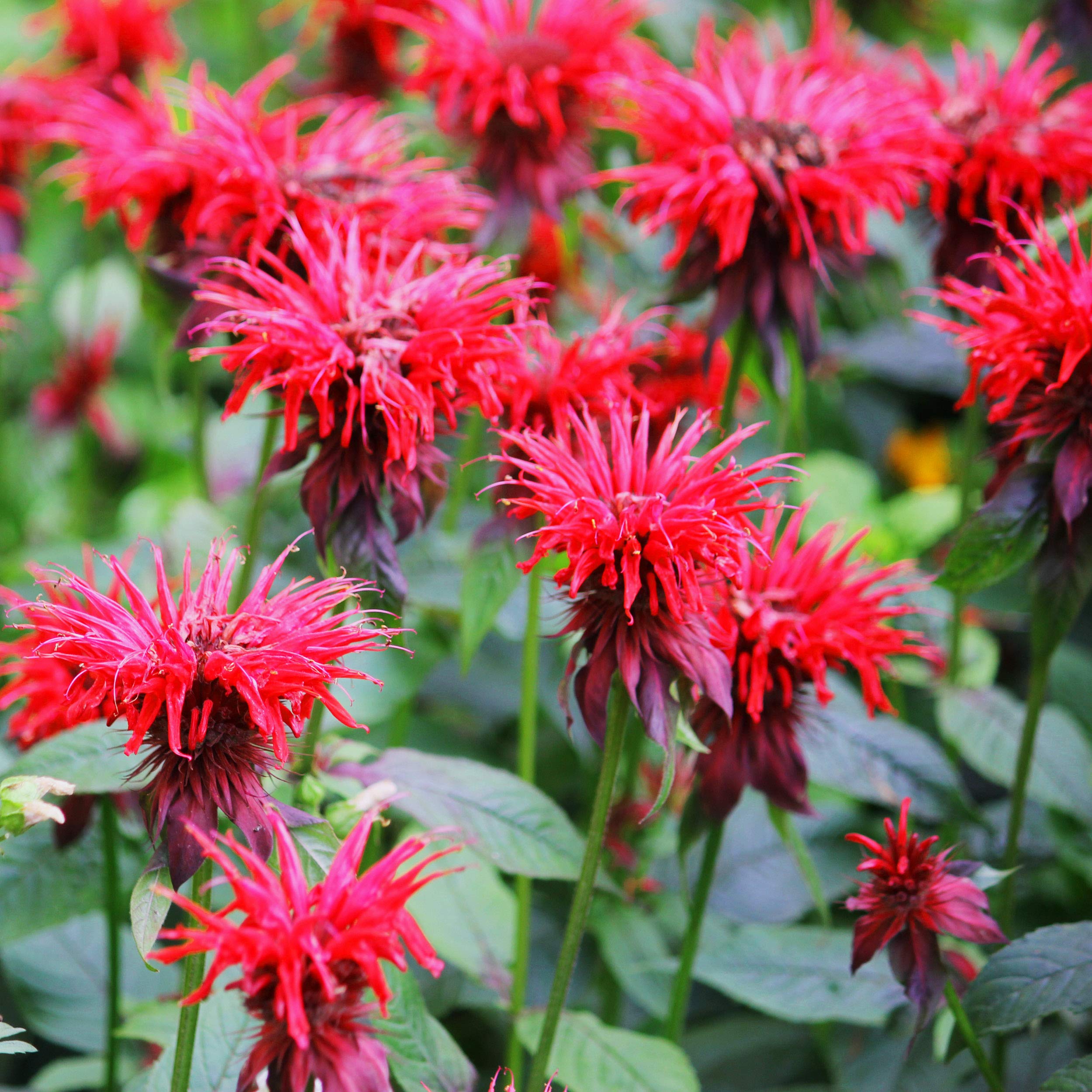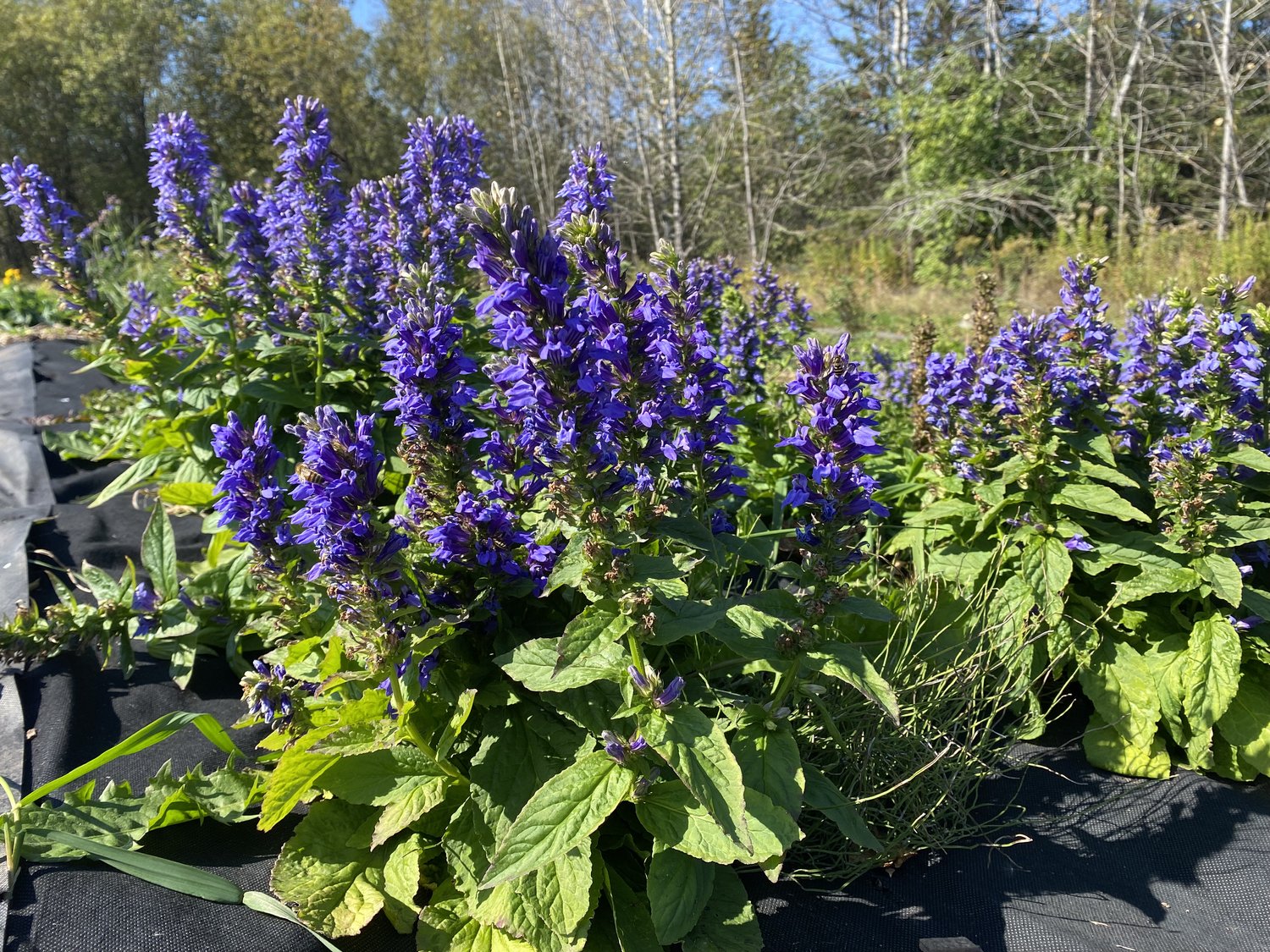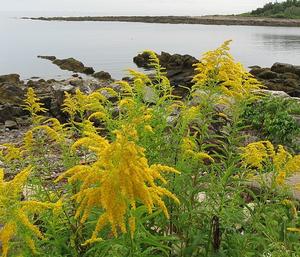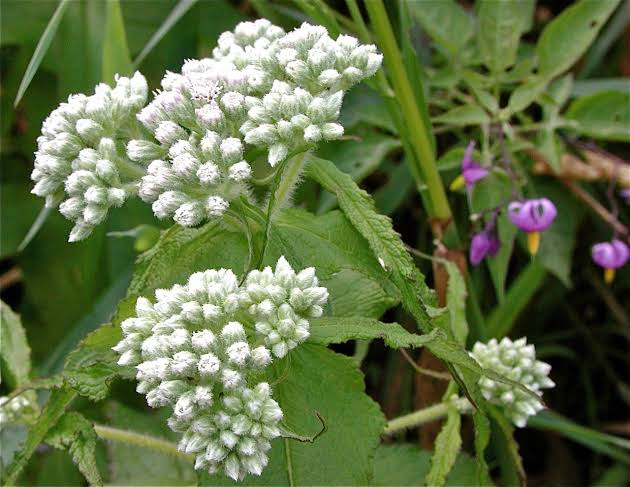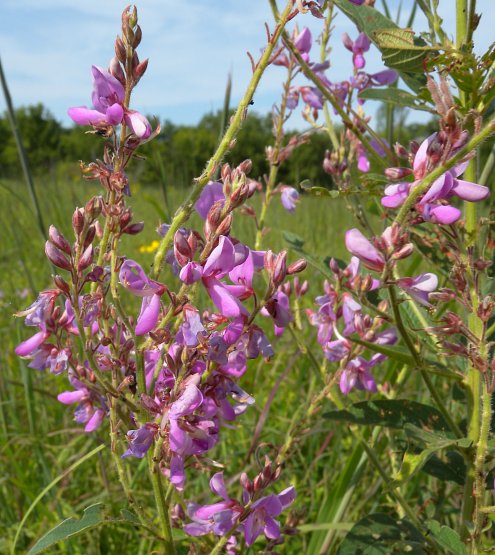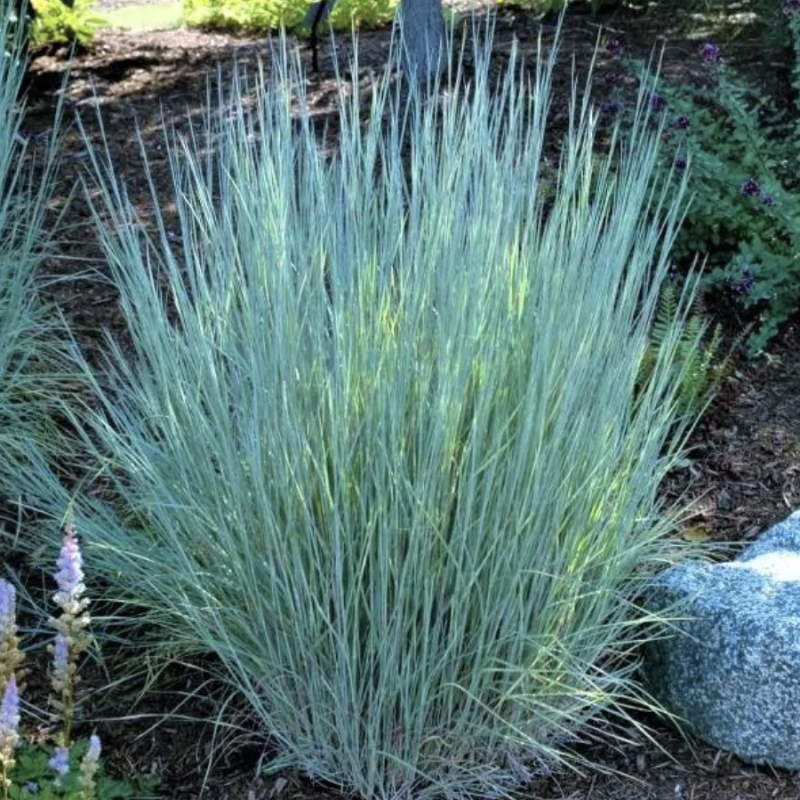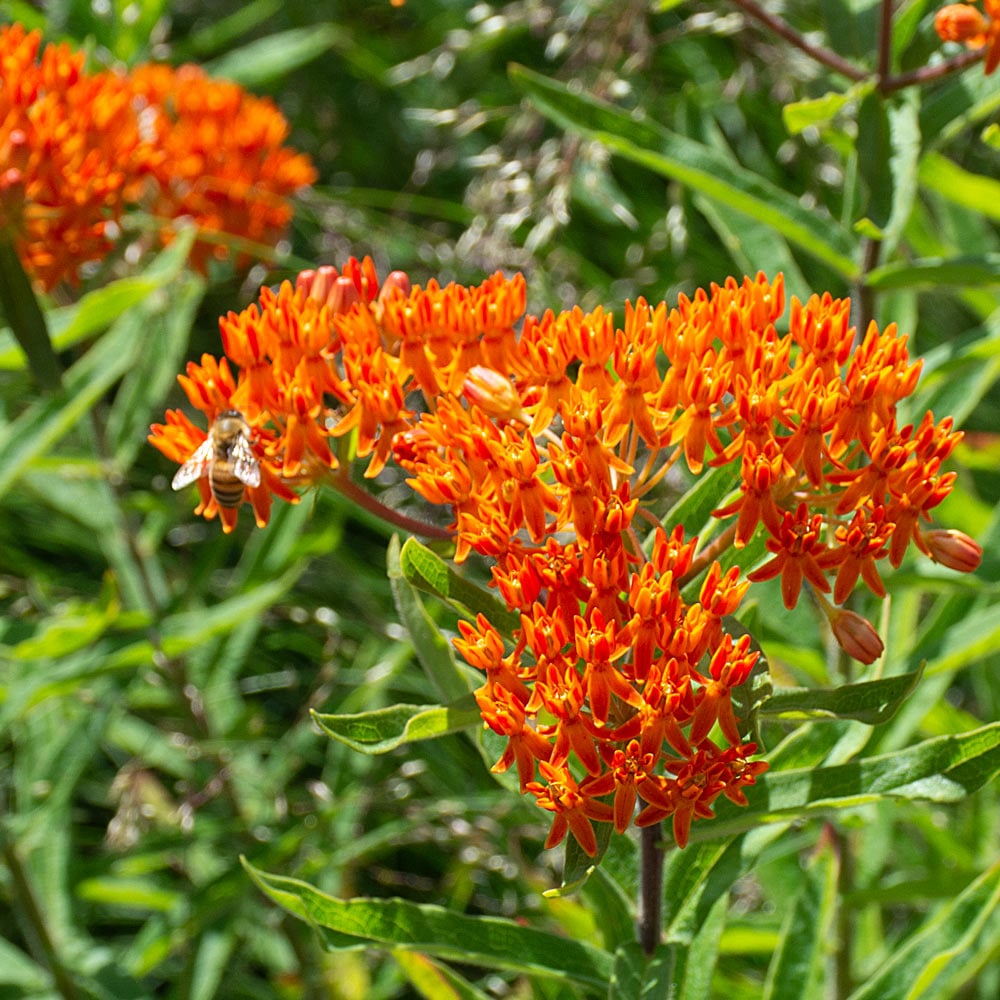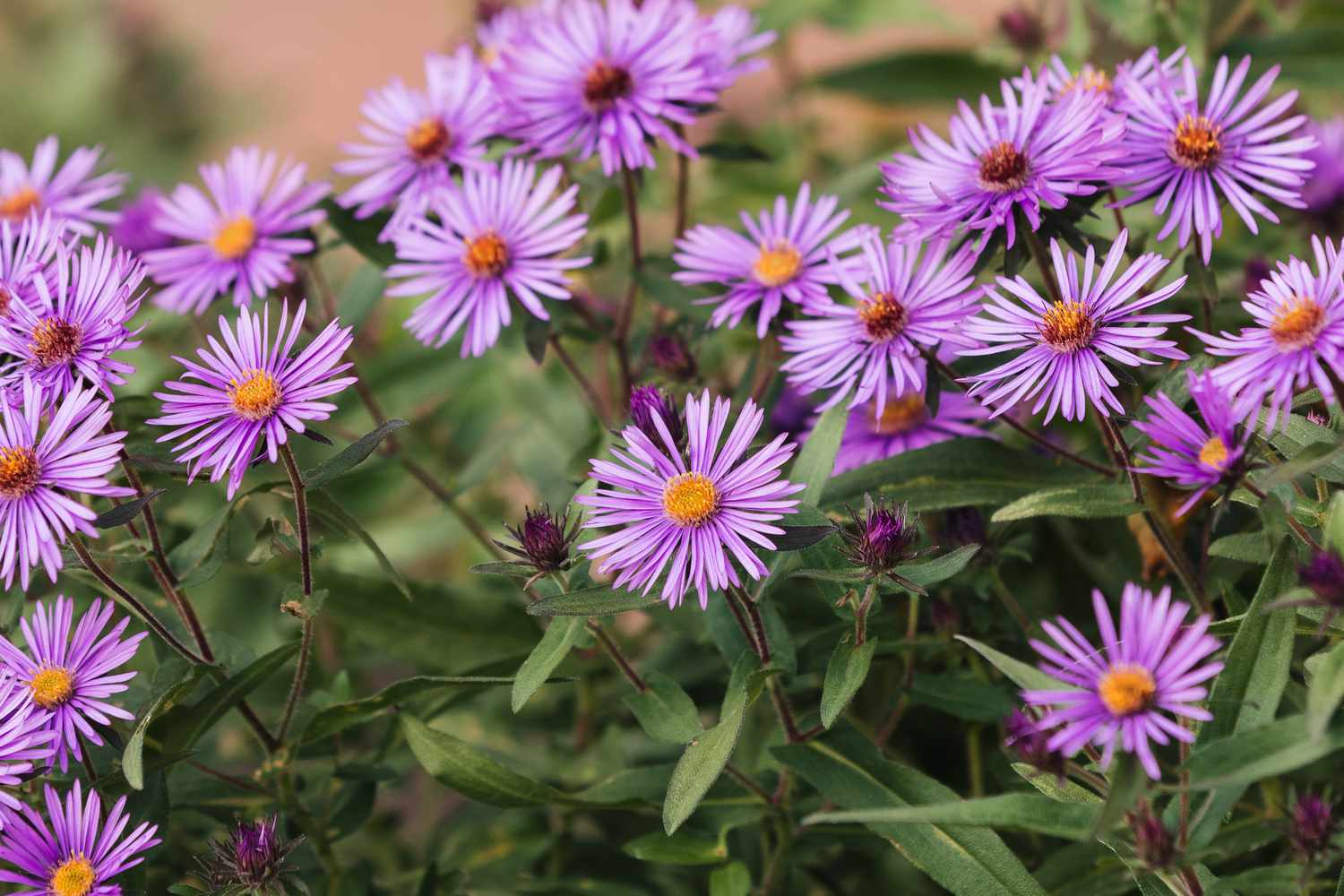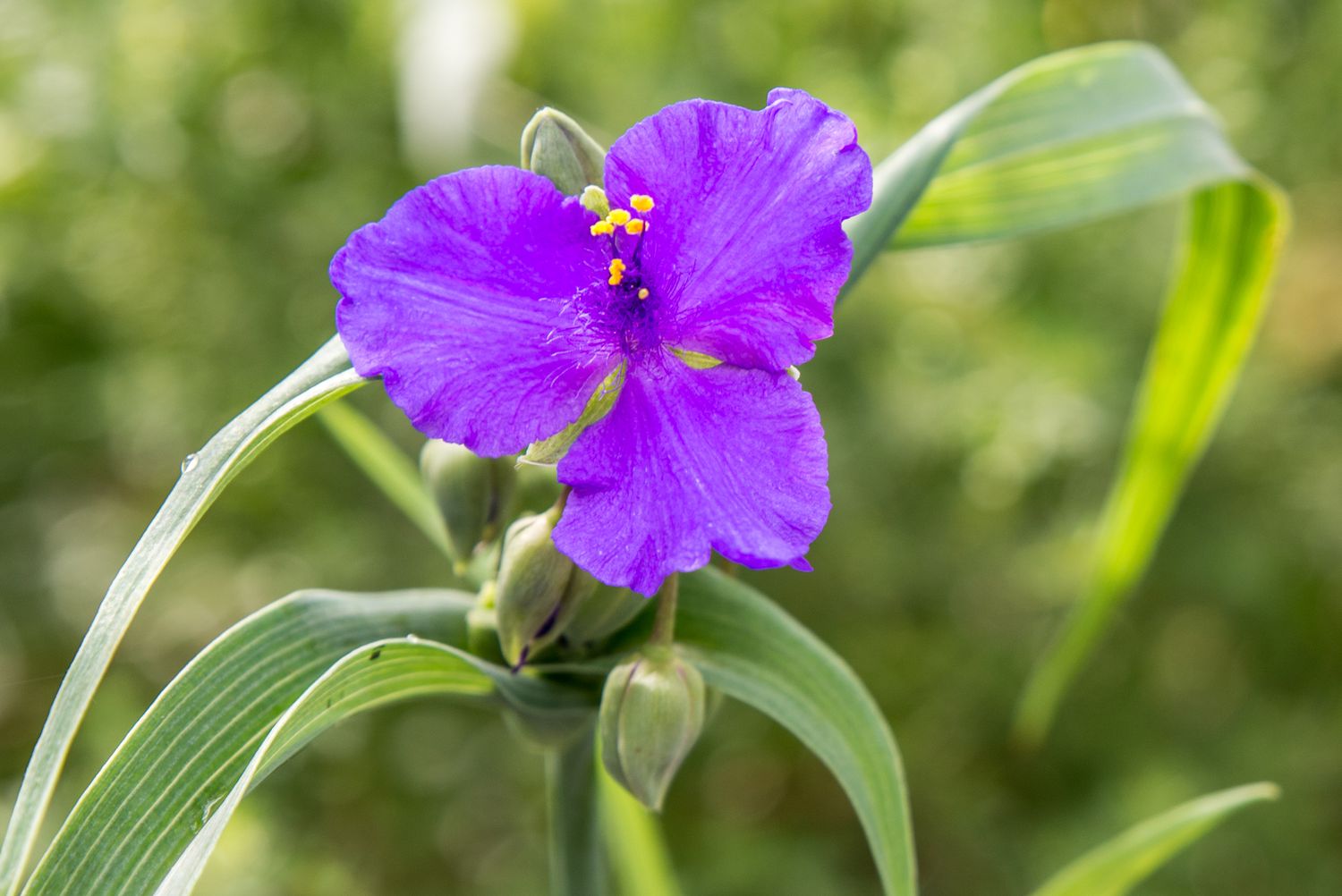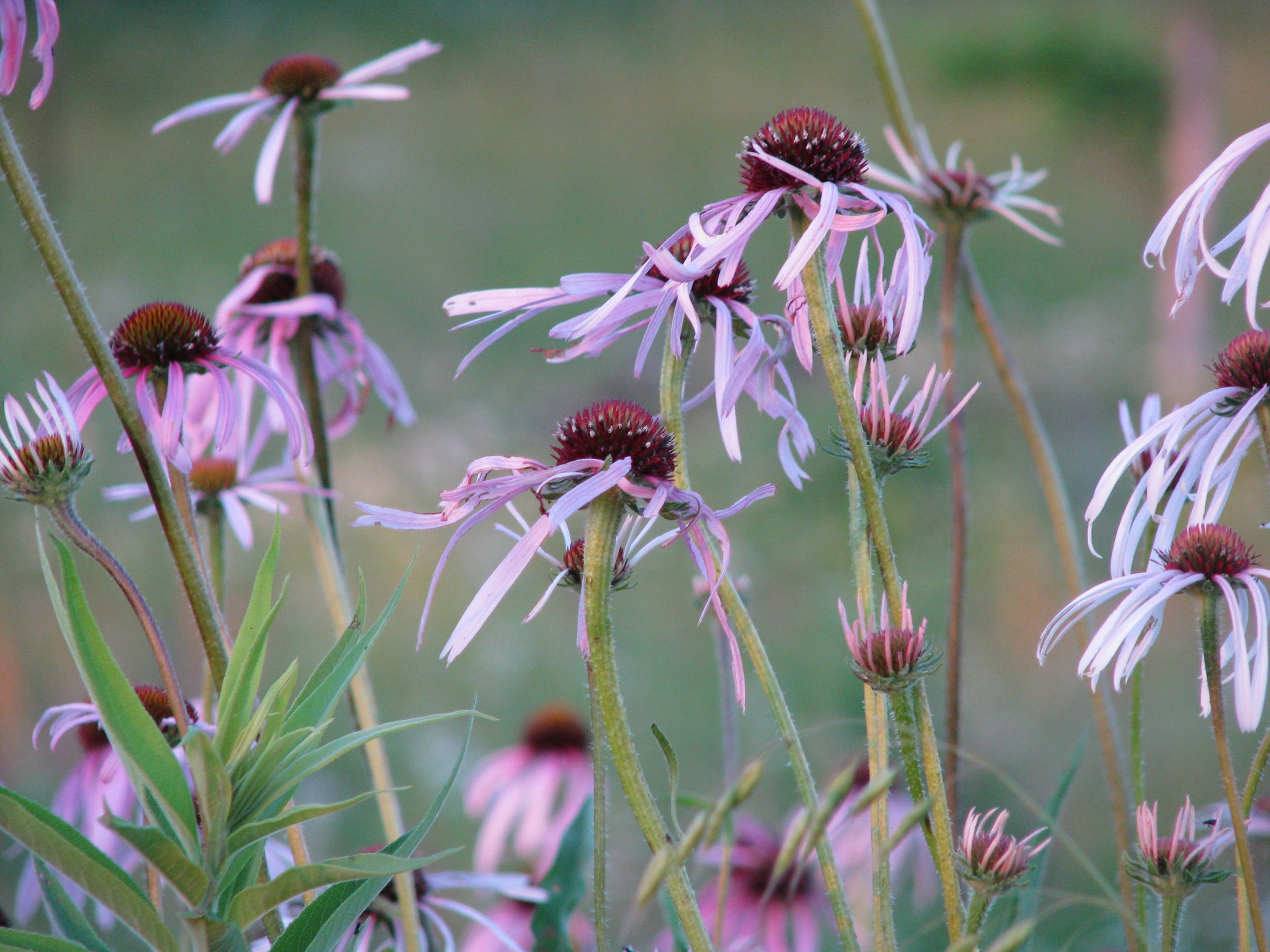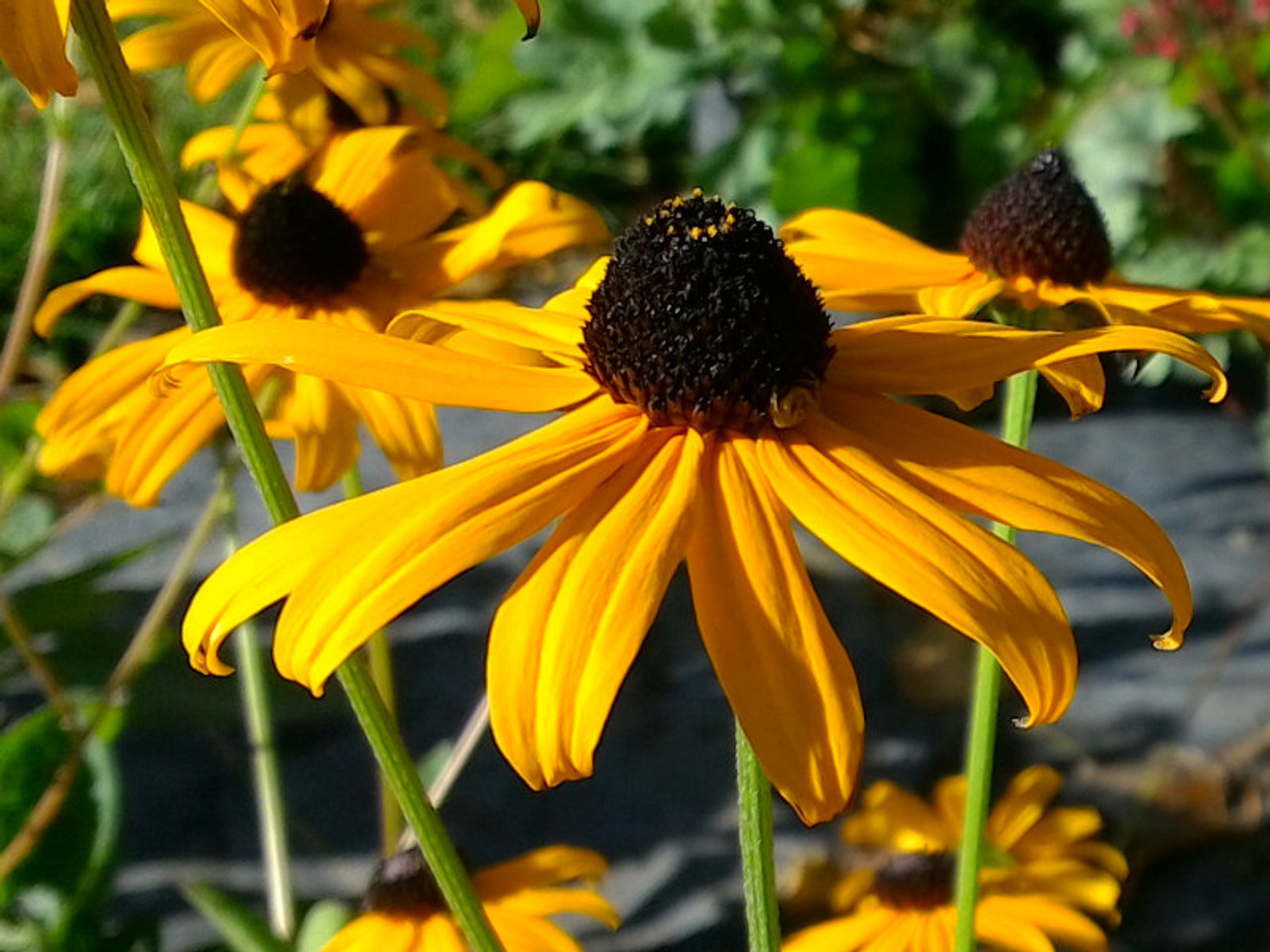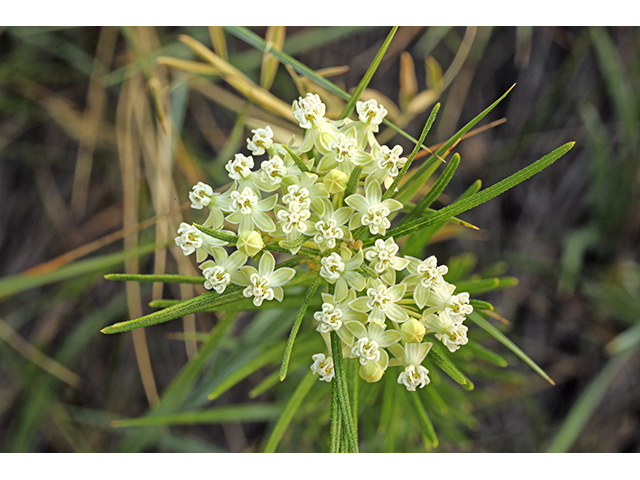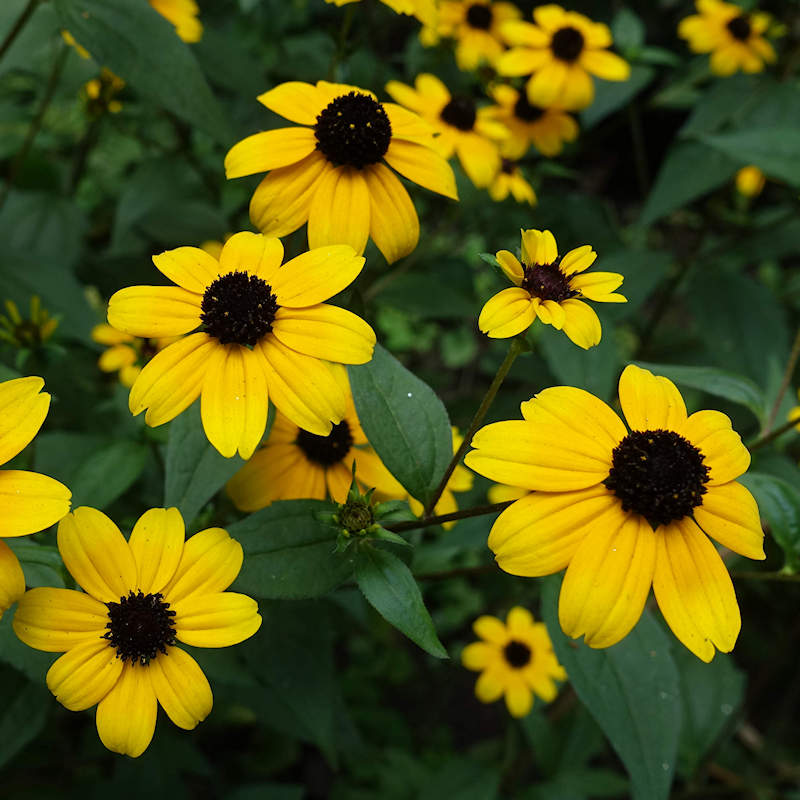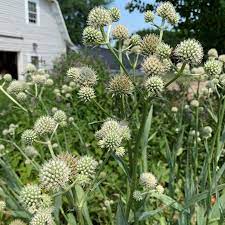Why Native Plants?
The library has recently begun focusing its landscaping efforts on the introduction of native plants wherever possible. Some reasons to focus on native plants include:
- Attracting and supporting local wildlife habitats
- More cost effective and less labor intensive
- Contributes to healthy soil and reinforces a healthy local ecology
- Native plants make for beautiful landscaping and add a splash of color that changes naturally with the seasons.
Our Landscaping
The library currently has a few spaces dedicated to native plants: a large planter that can be found by our front entrance, next to our outdoor musical instruments, the area surrounding our digital sign near our parking lot entrance across from the Cook House and integrated into the planter along the walkway to the front entrance.
Please see below for all the native plants currently included in our landscaping, along with some basic info about each species, and while you're here check out our helpful links, upcoming science and nature programming, book recommendations and more!
Creating Your Own Pocket Prairie
At our Native Seed Giveaway program on March 3, Will from Will's Native Perennials introduced the idea of creating "pocket prairies" in your yard. Please keep an eye out for more on pocket prairies or other similar programs in the future. In the meantime please enjoy these handouts made available at the Native Seed Giveaway.
Science and Nature Events
Join us for an educational stroll through the woods to learn about the local bird population from the experts at Red Hill Birding.
Through hands-on experiments and fun interactive stories, kids will get excited about the science that’s all around us, as we celebrate the scientists who color our world with art. For grades K-5.
Gardening with Native Plants
-
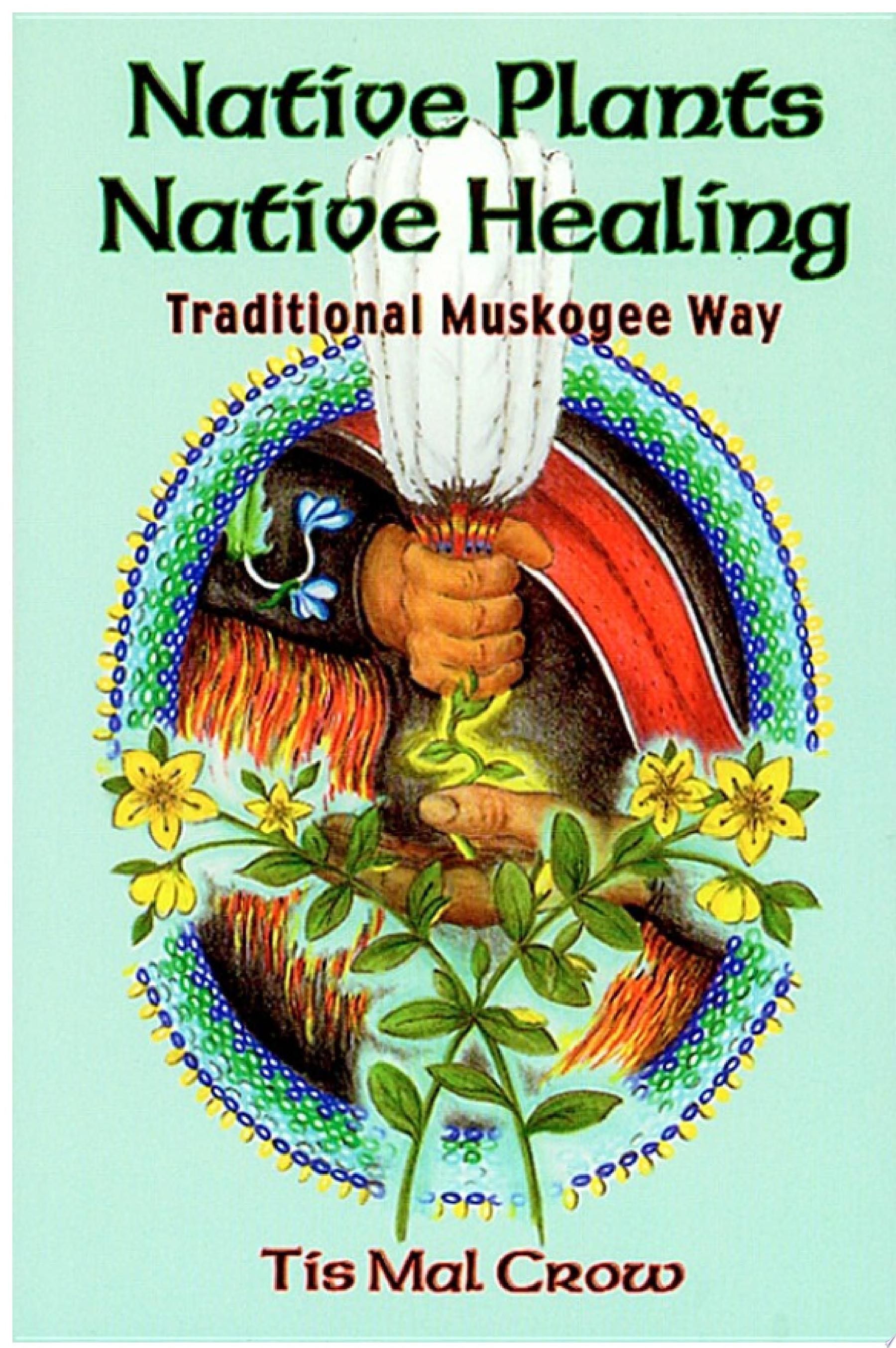
Native Plants, Native Healing
This book is a must for beginners and serious students of herbs and of Native American ways. This set of herbal teachings, which draws strongly from the Muscogee tradition, presents an understanding of the healing nature of plants for the first time in book form. In a time of expanding awareness of the potential of herbs, this work shines and beckons. Tis Mal examines common wild plants and in a clear and authoritative style explains how to identify, honor, select, and prepare them for use. Illustrated and indexed by plant name and medical topic.
-
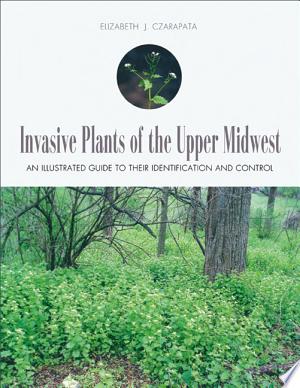
Invasive Plants of the Upper Midwest
Invasive Plants of the Upper Midwest is an informative, colorful, comprehensive guide to invasive species that are currently endangering native habitats in the region. It will be an essential resource for land managers, nature lovers, property owners, farmers, landscapers, educators, botanists, foresters, and gardeners.
Invasive plants are a growing threat to ecosystems everywhere. Often originating in distant climes, they spread to woodlands, wetlands, prairies, roadsides, and backyards that lack the biological controls which kept these plant populations in check in their homelands.
Invasive Plants of the Upper Midwest includes more than 250 color photos that will help anyone identify problem trees, shrubs, vines, grasses, sedges, and herbaceous plants (including aquatic invaders). The text offers further details of plant identification; manual, mechanical, biological, and chemical control techniques; information and advice about herbicides; and suggestions for related ecological restoration and community education efforts. Also included are literature references, a glossary, a matrix of existing and potential invasive species in the Upper Midwest, an index with both scientific and common plant names, advice on state agencies to contact with invasive plant questions, and other helpful resources.
The information in this book has been carefully reviewed by staffs of the Wisconsin Department of Natural Resources Bureau of Endangered Resources and the University of Wisconsin-Madison Arboretum and other invasive plant experts. -
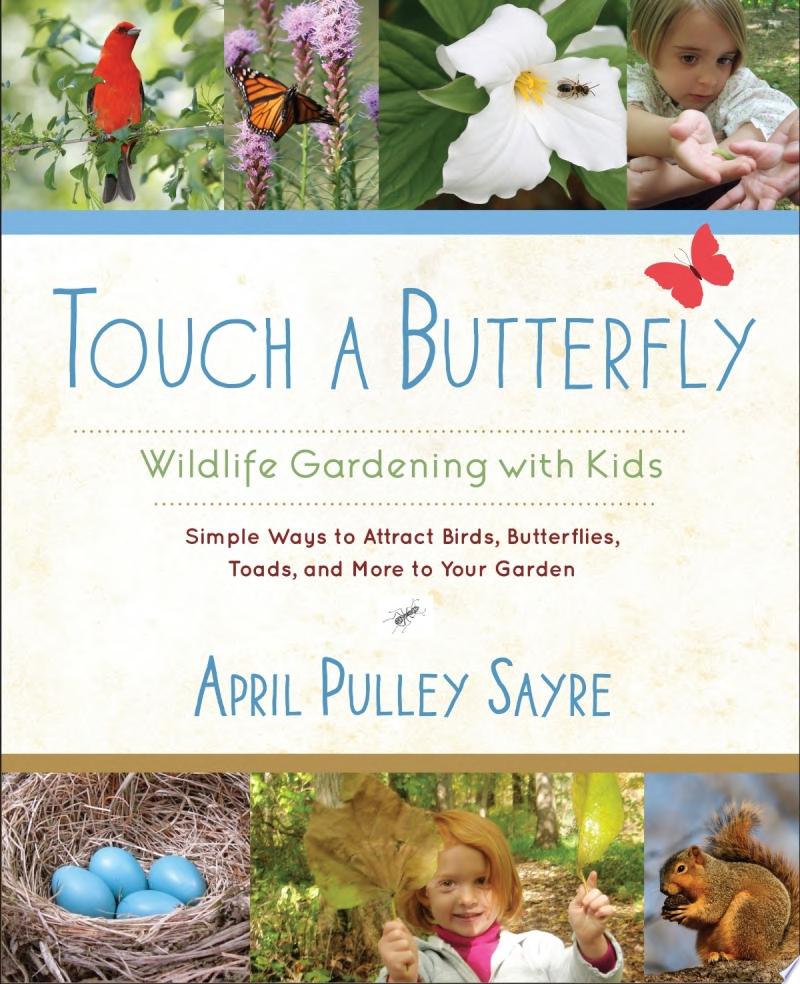
Touch a Butterfly
Turn your garden into a hummingbird hotspot, a haven for butterflies, and a thriving ecosystem that will delight and inspire the young and young-at-heart.
Gardening with children is a pleasure in itself, but when you learn to include wildlife in your plans, gardening becomes an even more joyful family experience. Creating a garden that invites wildlife opens up a wider world of nature for investigation, inspiration, and delight. Begin to see your yard from an animal’s perspective; discover plants that attract colorful birds and bugs; embrace sensory experiences that native plants and creatures bring; and understand how your yard fits into the surrounding landscape. Along the way you will discover simple ways you can actively support wildlife in your immediate environment, no matter where you live. This family-friendly guide to wildlife gardening leads you on a path to discovery, where trees are transformed into bird and animal habitats, where sunny spots are revered for dragonfly viewing, and where your entire garden becomes an animal-welcoming kingdom. -
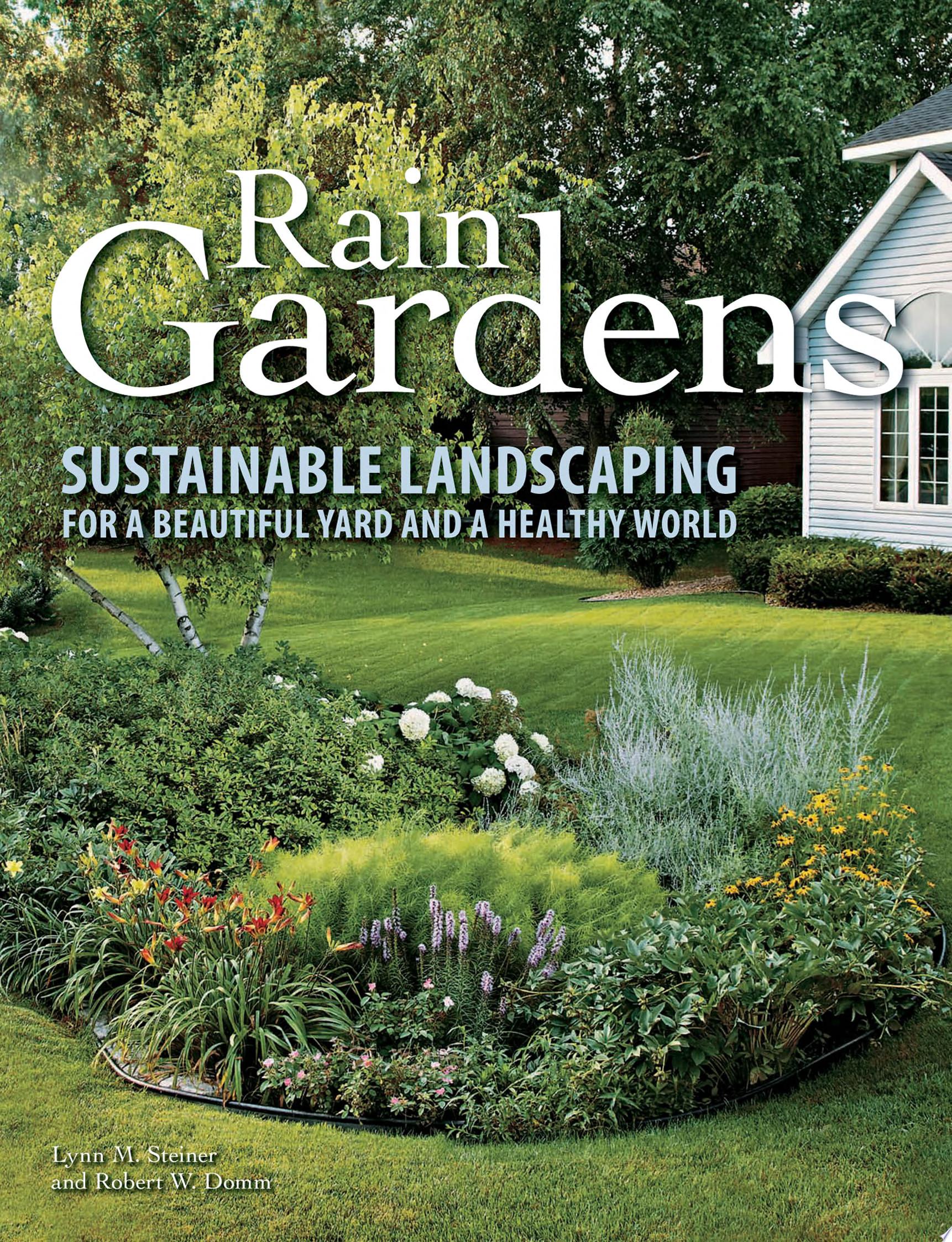
Rain Gardens
Rain gardens are at the forefront of the green revolution. This environmentally friendly landscaping captures rainwater runoff rather than redirecting it into storm drains. The result is less erosion, less water pollution, and a beautiful, low-maintenance, sustainable garden. This is the first rain garden handbook for the backyard home gardener. Co-authors Robert Domm and Lynn Steiner draw on hands-on experience to help homeowners build beautiful rain gardens in their own yards. Illustrated with color photography, this instructive book offers specific advice about planning, building, planting, and maintaining your garden. Learn about city grants, how to calculate runoff, rain barrels, attracting wildlife, gray water recycling, and much more.
-
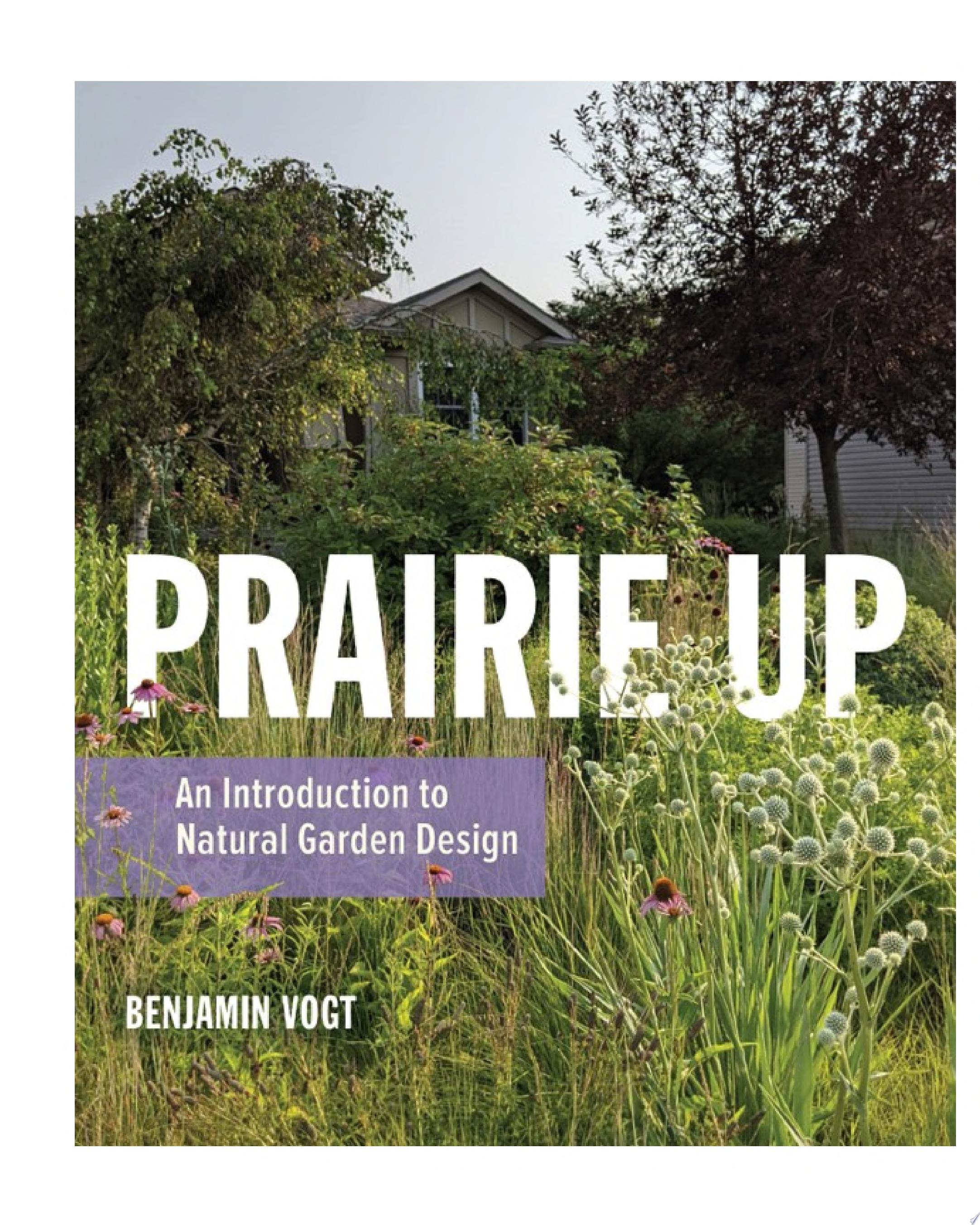
Prairie Up
Connecting to nature with native plants
Landscaping with native plants has encouraged gardeners from the Midwest and beyond to embark on a profound scientific, ecological, and emotional partnership with nature. Benjamin Vogt shares his expertise with prairie plants in a richly photographed guide aimed at gardeners and homeowners, making big ideas about design approachable and actionable. Step-by-step blueprints point readers to plant communities that not only support wildlife and please the eye but that rethink traditional planting and maintenance. Additionally, Vogt provides insider information on plant sourcing, garden tools, and working with city ordinances. This book will be an invaluable reference in sustainable garden design for those wanting both beautiful and functional landscapes.
Easy to use and illustrated with over 150 color photos, Prairie Up is a practical guide to artfully reviving diversity and wildness in our communities.
-
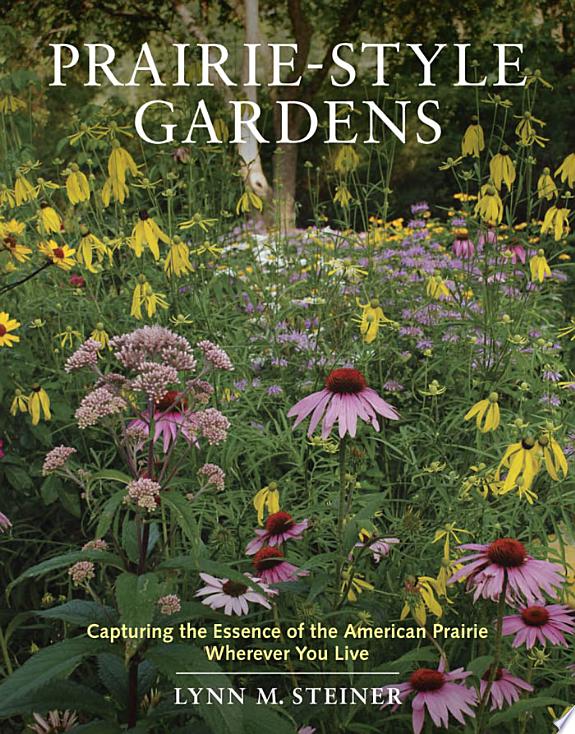
Prairie-style Gardens
With its unique blend of grasses and sturdy perennials, the North American prairie is one of the world's richest and most beautiful biotopes. It's also one of the most endangered--only a tiny fraction remains of the millions of pristine acres that once stretched from horizon to horizon. Fortunately, you can re-create some of this diversity at home and enjoy these fascinating plant communities up close. You don't need to have endless acres at your disposal--you can have an authentic prairie garden on a city or suburban lot.
And you don't even have to live on the Great Plains: prairie plants are practical choices for any landscape situation that has good drainage and full sun, whether in New England or the desert Southwest. Moreover, with their modest water needs, prairie plants make a great substitute for water-hungry lawns. And at a time when wildlife habitats are under increasing pressure from development, their flowers and foliage provide food and shelter for birds and beneficial insects.
Eminently practical, Prairie-Style Gardens shows you how to use prairie plants in a wide variety of situations, from including a few prairie plants in an existing landscape to creating a full-fledged habitat garden. Especially useful is the author's advice on how to make prairie plants work in a typical urban or suburban setting, where it isn't easy to deviate from the local norm. A comprehensive plant profiles section helps you choose which plants will look best and thrive in your particular situation. Each plant entry includes detailed information on size, native habitats, site requirements, hardiness, appropriate landscape uses, care, companion plants, and available cultivars.
Anyone can have a prairie--this book tells you how to do it. -
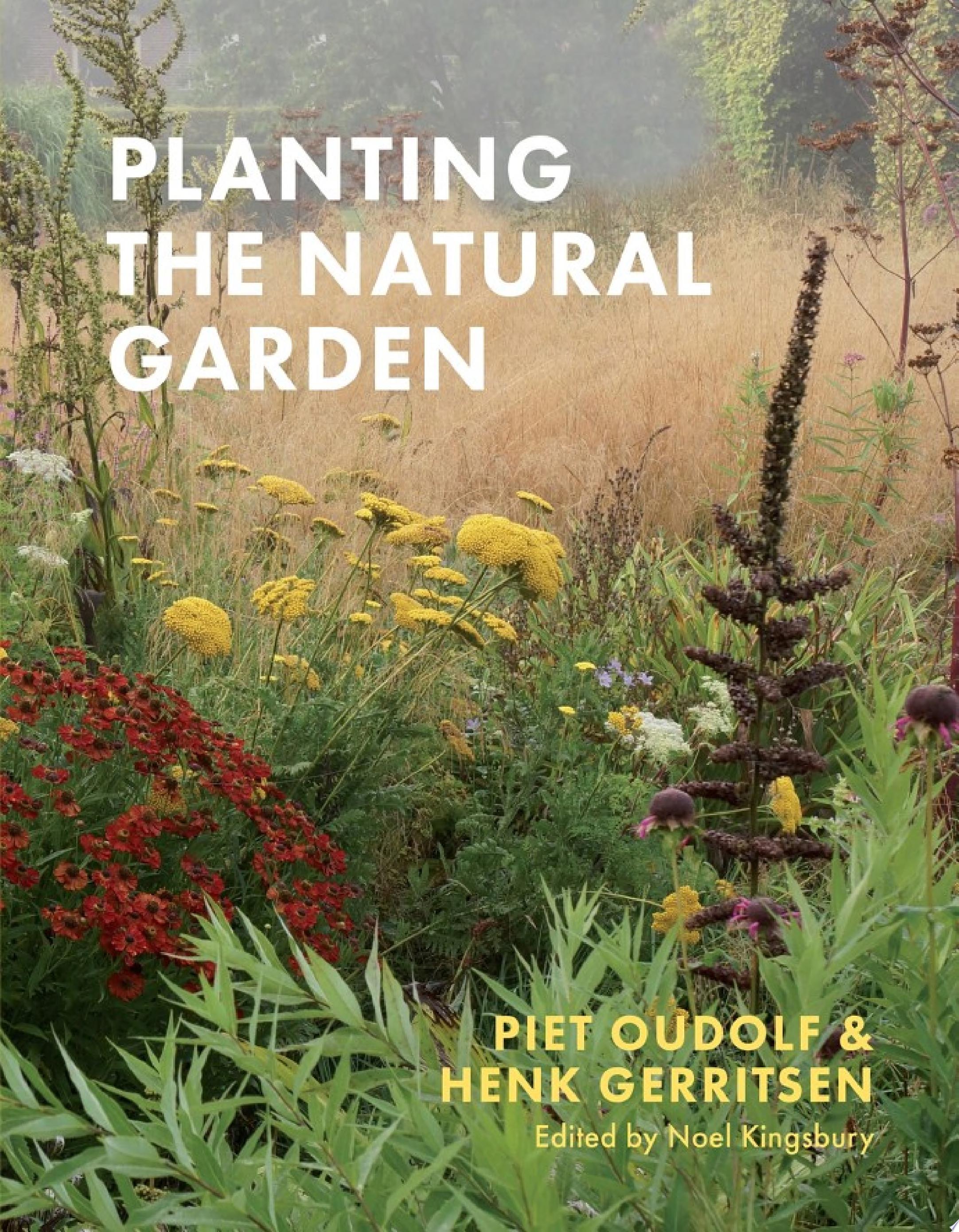
Planting the Natural Garden
“If the world of gardening has rock stars, Piet Oudolf qualifies as Mick Jagger, David Bowie, and Prince rolled into one.” —Gardenista
The original publication of Planting the Natural Garden ushered in a revolution in landscape design: the New Perennial Movement. Spearheaded by internationally renowned designer Piet Oudolf, and incisively articulated by the late plantsman and designer Henk Gerritsen, it transformed private and public spaces with its emotionally resonant, naturalistic use of hardy perennials and grasses.
Now this classic has been expanded and updated to include scores of new plants and combinations. Packed with practical information and visual inspiration, Planting the Natural Garden zeroes in on the New Perennial Movement’s power to move us, making its distinctive plant palette available to all. For enthusiasts of these vibrant landscapes, it is an essential text; for gardeners who love the dreamy moods and colors that Oudolf and Gerritsen celebrate, it’s the key to a magic kingdom of garden beauty. -
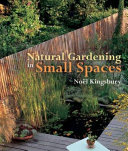
Natural Gardening in Small Spaces
With the growing recognition that a wisely and sensitively planted garden has a lot to offer to wildlife and the food web, more and more people are looking for ways to make their gardens environmentally friendly. However, gardeners have tended to assume that they need a lot of space to create habitats for wildlife and to evoke wild and natural places. In Natural Gardening in Small Spaces, renowned plantsman Noël Kingsbury refutes that presumption, showing how even in a small garden you can create a sustainable ecosystem that looks great — and, once established, largely looks after itself. More than 150 glorious photographs of small natural gardens provide visual confirmation of Noël Kingsbury's contention that even the smallest garden can provide a natural haven.
-
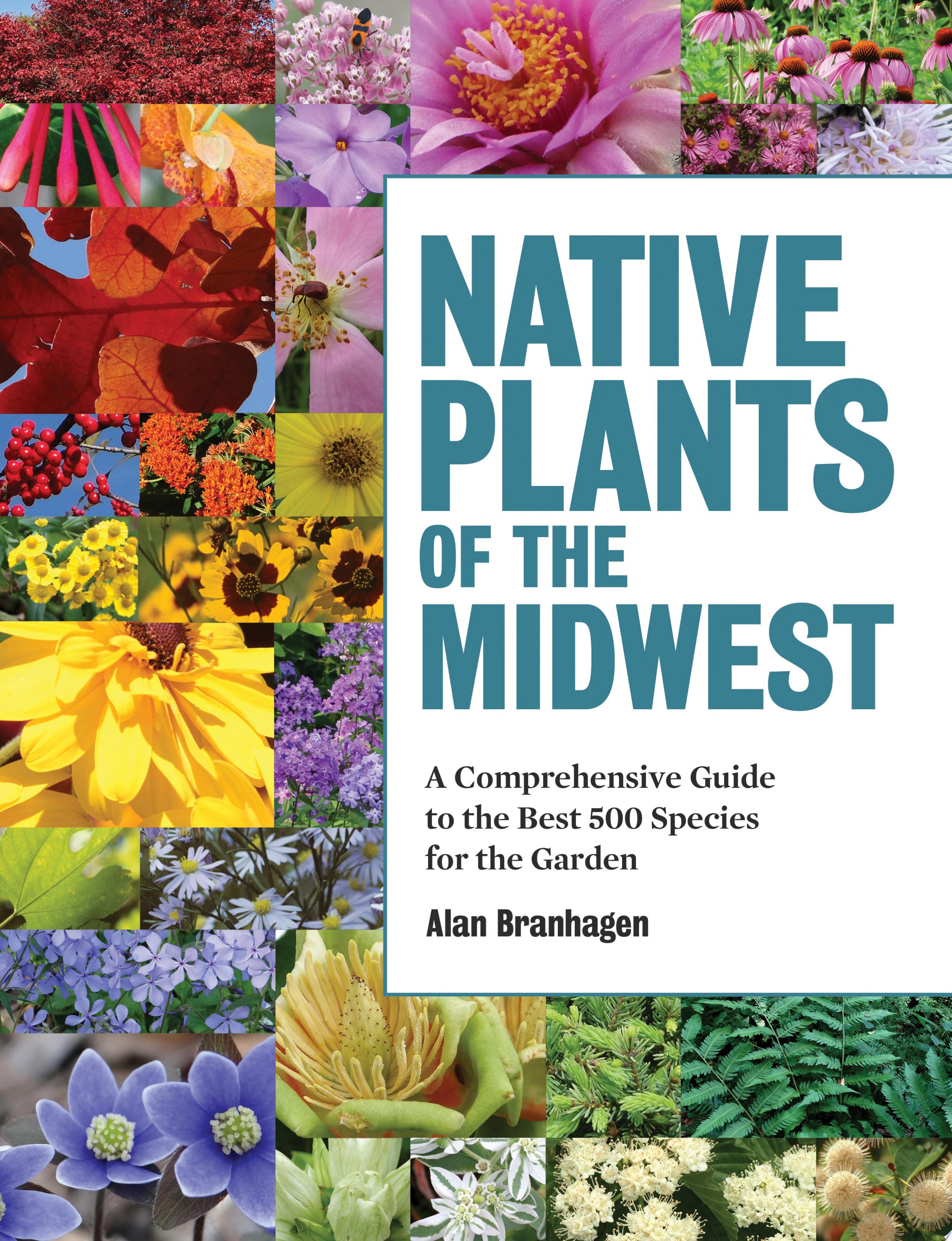
Native Plants of the Midwest
Native Plants of the Midwest, by regional plant expert Alan Branhagan, features the best native plants in the heartland and offers clear and concise guidance on how to use them in the garden. Plant profiles for more than 500 species of trees, shrubs, vines, perennials, ground covers, bulbs, and annuals contain the common and botanical names, growing information, tips on using the plant in a landscape, and advice on related plants. You’ll learn how to select the right plant and how to design with native plants. Helpful lists of plants for specific purposes are shared throughout. This comprehensive book is for native plant enthusiasts and home gardeners in Ohio, Michigan, Indiana, Illinois, Wisconsin, Minnesota, Iowa, Missouri, Nebraska, North and South Dakota, northern Arkansas, and eastern Kansas.
-
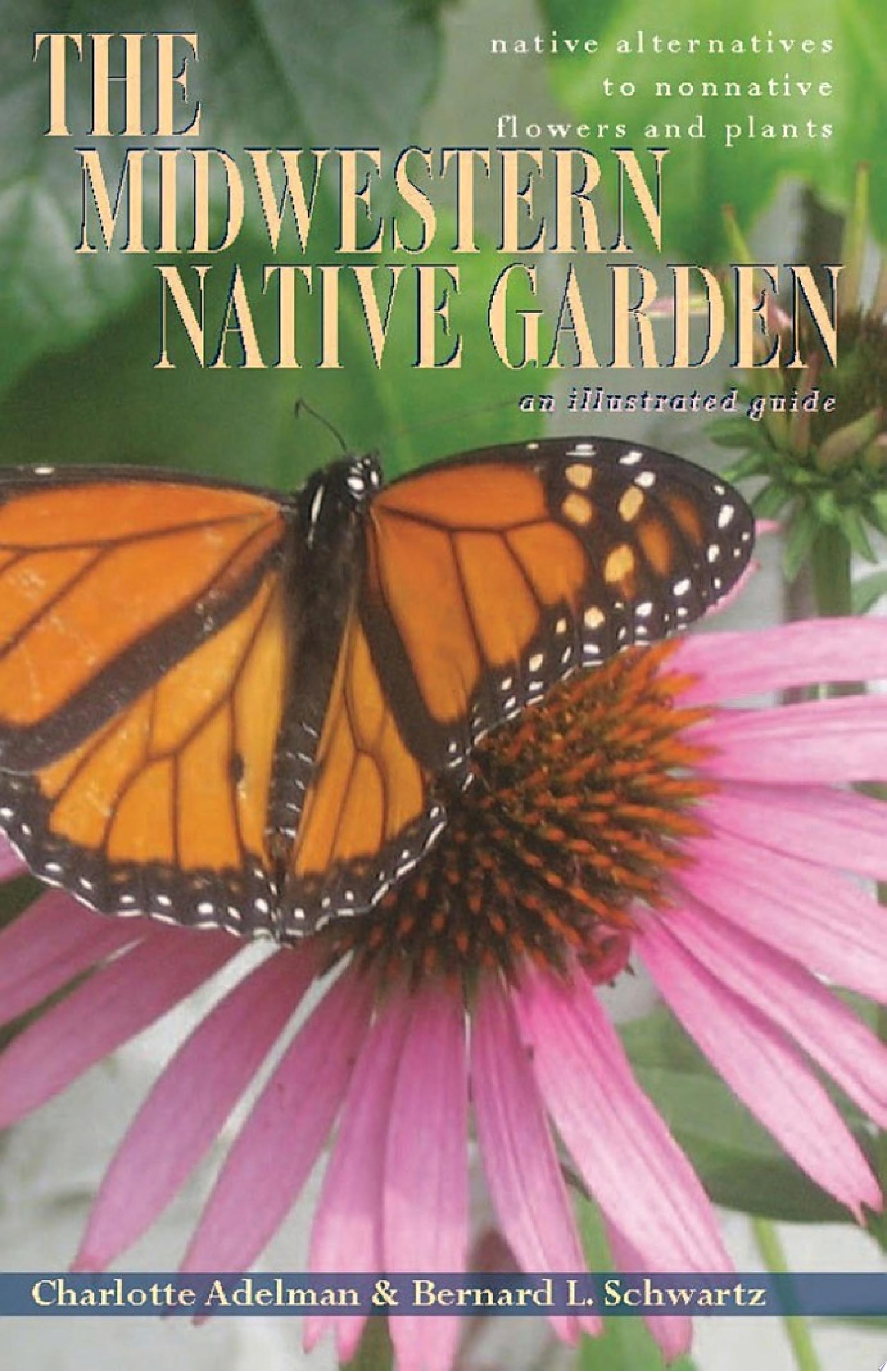
The Midwestern Native Garden
Midwestern gardeners and landscapers are becoming increasingly attracted to noninvasive regional native wildflowers and plants over popular nonnative species. The Midwestern Native Garden offers viable alternatives to both amateurs and professionals, whether they are considering adding a few native plants or intending to go native all the way. Native plants improve air and water quality, reduce use of pesticides, and provide vital food and reproductive sites to birds and butterflies, that nonnative plants cannot offer, helping bring back a healthy ecosystem.
The authors provide a comprehensive selection of native alternatives that look similar or even identical to a range of nonnative ornamentals. These are native plants that are suitable for all garden styles, bloom during the same season, and have the same cultivation requirements as their nonnative counterparts. Plant entries are accompanied by nature notes setting out the specific birds and butterflies the native plants attract.
The Midwestern Native Garden will be a welcome guide to gardeners whose styles range from formal to naturalistic but who want to create an authentic sense of place, with regional natives. The beauty, hardiness, and easy maintenance of native Midwestern plants will soon make them the new favorites.
-
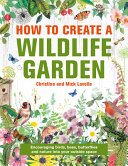
How to Create a Wildlife Garden
This inspiring and accessible hands-on book shows how simple gardening techniques can provide a dazzling plant display while helping the native wildlife. This new updated edition of the award-winning book (Garden Media Guild Practical Book of the Year) gives easy-to-follow instructions backed up with advice on planning and design, showing how we can share our outdoor space with nature. The authors show how to encourage beneficial garden species and discourage the more problematic ones. With its wealth of practical advice and detailed photography, this is the ideal sourcebook for gardeners and wildlife enthusiasts.
-
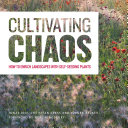
Cultivating Chaos
Self-seeding plants can create naturalistic gardens of great charm, but left to their own devices quickly spiral out of control. Maintaining the balance of plants so that a small number of robust species do not evict the others and developing the structure of the garden are important techniques to acquire. Taking inspiration from the gardens of Christopher Lloyd, Derek Jarman and Henk Gerritsen, Cultivating Chaos teaches how to prepare your soil for improved germination, guide your planting as it evolves, and create different ecological niches from which will emerge beautiful, species-rich gardens.
-
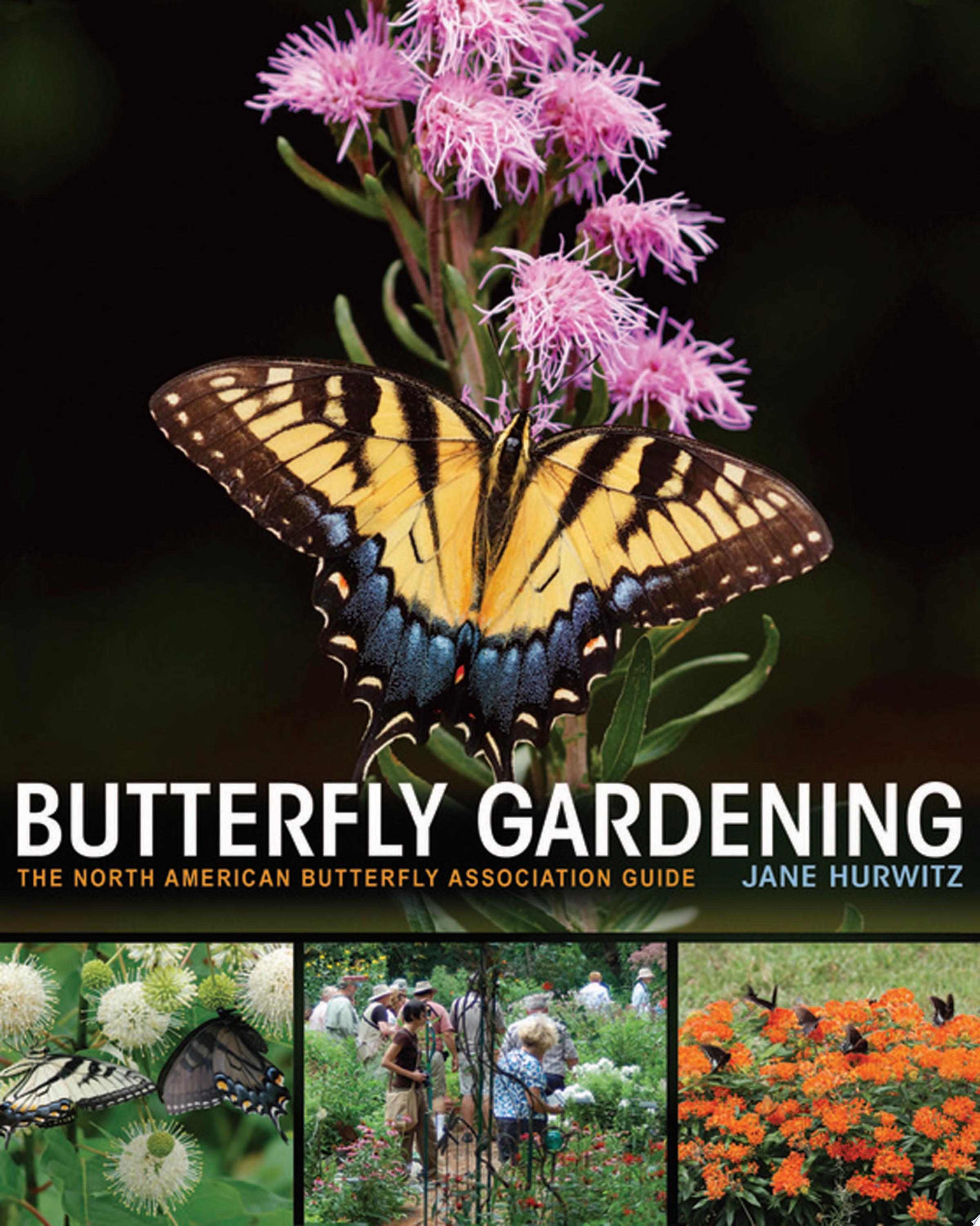
Butterfly Gardening
An indispensable and lavishly illustrated guide to creating a garden that attracts and sustains butterflies
Butterfly gardening creates habitats that support butterflies, connecting us with some of the most beautiful creatures in the natural world and bringing new levels of excitement and joy to gardening. In this engaging and accessible guide, lavishly illustrated with more than two hundred color photographs and maps, accomplished butterfly gardener Jane Hurwitz presents essential information on how to choose and cultivate plants that will attract a range of butterflies to your garden and help sustain all the stages of their life cycles.
An indispensable resource for aspiring and experienced butterfly gardeners alike, Butterfly Gardening is the most gardener-friendly source on the subject, covering all the practical details needed to create a vibrant garden habitat that fosters butterflies. It tells you which plants support which butterflies, depending on where you live; it describes what different butterflies require in the garden over the course of their lives; and it shows you how to become a butterfly watcher as well as a butterfly gardener.
While predominantly recommending regionally native plants, the book includes information on non-native plants. It also features informative interviews with experienced butterfly gardeners from across the United States. These gardeners share a wealth of information on plants and practices to draw butterflies to all kinds of gardens--from small suburban gardens to community plots and larger expanses.
Whether you are a gardener who wants to see more butterflies in your garden, a butterfly enthusiast who wants to bring that passion to the garden, or someone who simply wants to make their garden or yard friendlier to Monarchs or other butterflies, this is a must-have guide.- An essential guide for aspiring and experienced butterfly gardeners
- Encourages readers to rethink gardening choices to support butterflies and other pollinators in their gardens and communities
- Introduces gardeners to butterfly watching
- Includes regional lists of plant species that are time-proven to help sustain butterflies and their caterpillars
- Features informative interviews with expert butterfly gardeners from across the United States
-
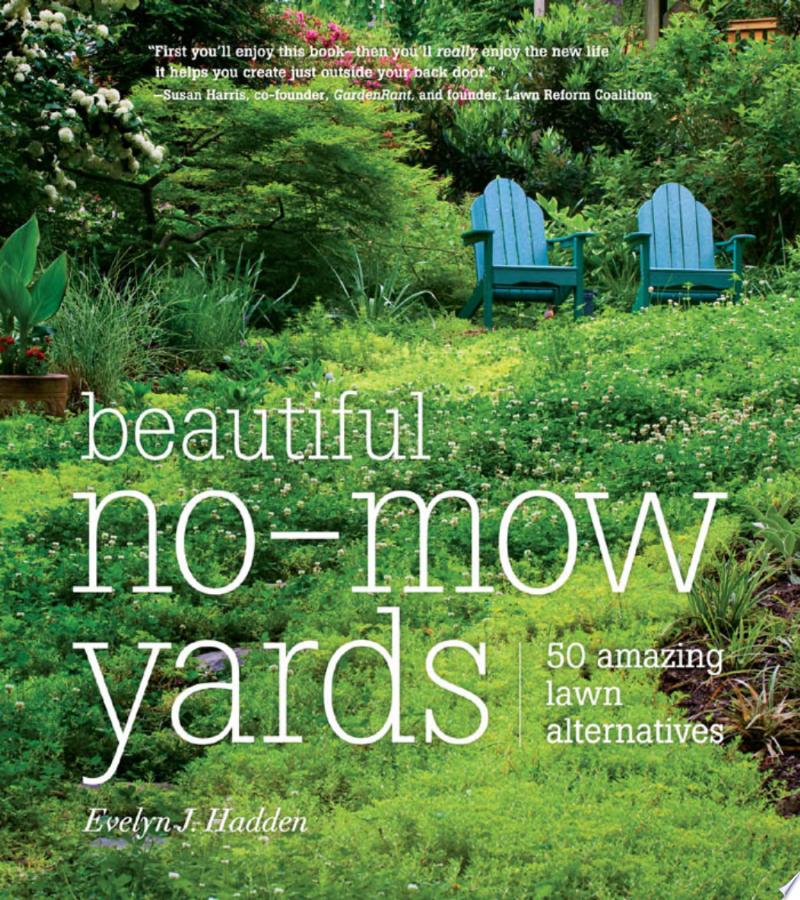
Beautiful No-Mow Yards
With Beautiful No-Mow Yards, you can transform your lawn into a livable garden and bring nature's beauty into your life!
What has your perfect green lawn done for you lately? Is it really worth the time, effort, and resources you lavish on it? Armed with encouragement, inspiration, and cutting-edge advice from award-winning author Evelyn Hadden, you can liberate yourself at last!In this ultimate guide to rethinking your yard, Hadden showcases dozens of inspiring, eco-friendly alternatives to that demanding (and dare we say boring?) green turf. Trade your lawn for a lively prairie or replace it with a runoff-reducing rain garden. Swap it for an interactive adventure garden or convert it to a low-maintenance living carpet.
-
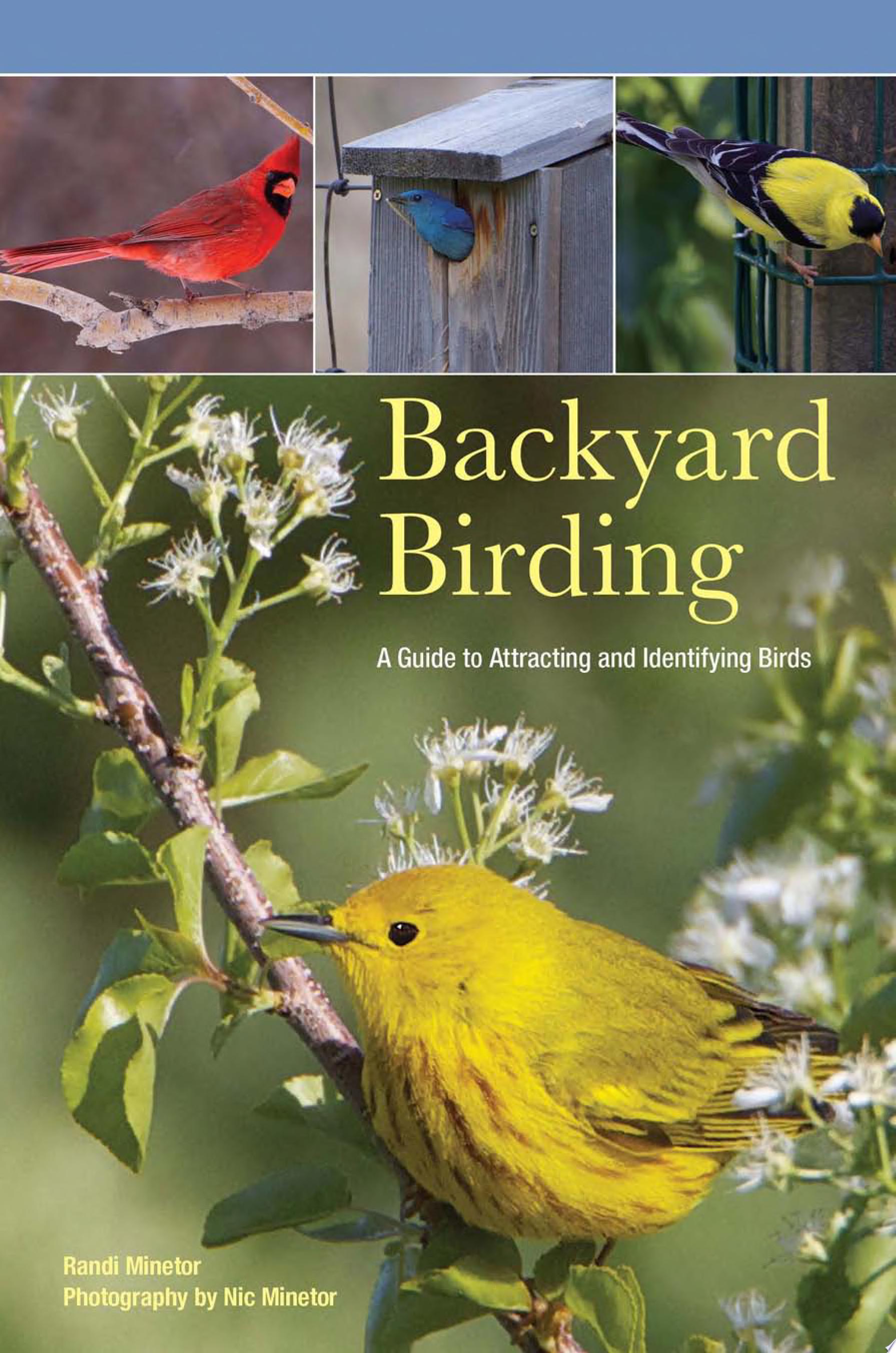
Backyard Birding
How to bring birds to your home and keep them there—including 250 full-color photos
They're out there every day, flashing through your yard, perching in a tree, collecting on utility wires, or congregating around puddles. They already share your backyard and neighborhood with you, but you—even if you are already one of America's more than 68 million birders—haven't formally invited them over for dinner. This book shows you how.
Backyard Birding helps you maximize your home birding experiences and attract a wider variety of birds. With 250 full-color photos and concise, informative text, it provides indispensable details on what foods, plants, trees, water sources, and nesting materials will attract particular species. It helps you make the right choices the first time—and avoid costly mistakes. As an identification guide, it goes further than any previous resource in clarifying such matters as male/female plumage variations and breeding vs. nonbreeding plumage. Randi and Nic Minetor traveled from Florida to Alaska to photograph the hundreds of species in these pages. The result is a compendium from America's backyards to your fingertips, with information useful in whatever climate or habitat your own backyard may provide.
* 250 vibrant full-color photos capturing birds in stunning detail
* Focus on top 24 birds found nationally as well as in Eastern and Western locations
* Picture index of all the birds found throughout the book for easy reference
* Seasonal bird feeding checklists
Building a Backyard Sanctuary
-
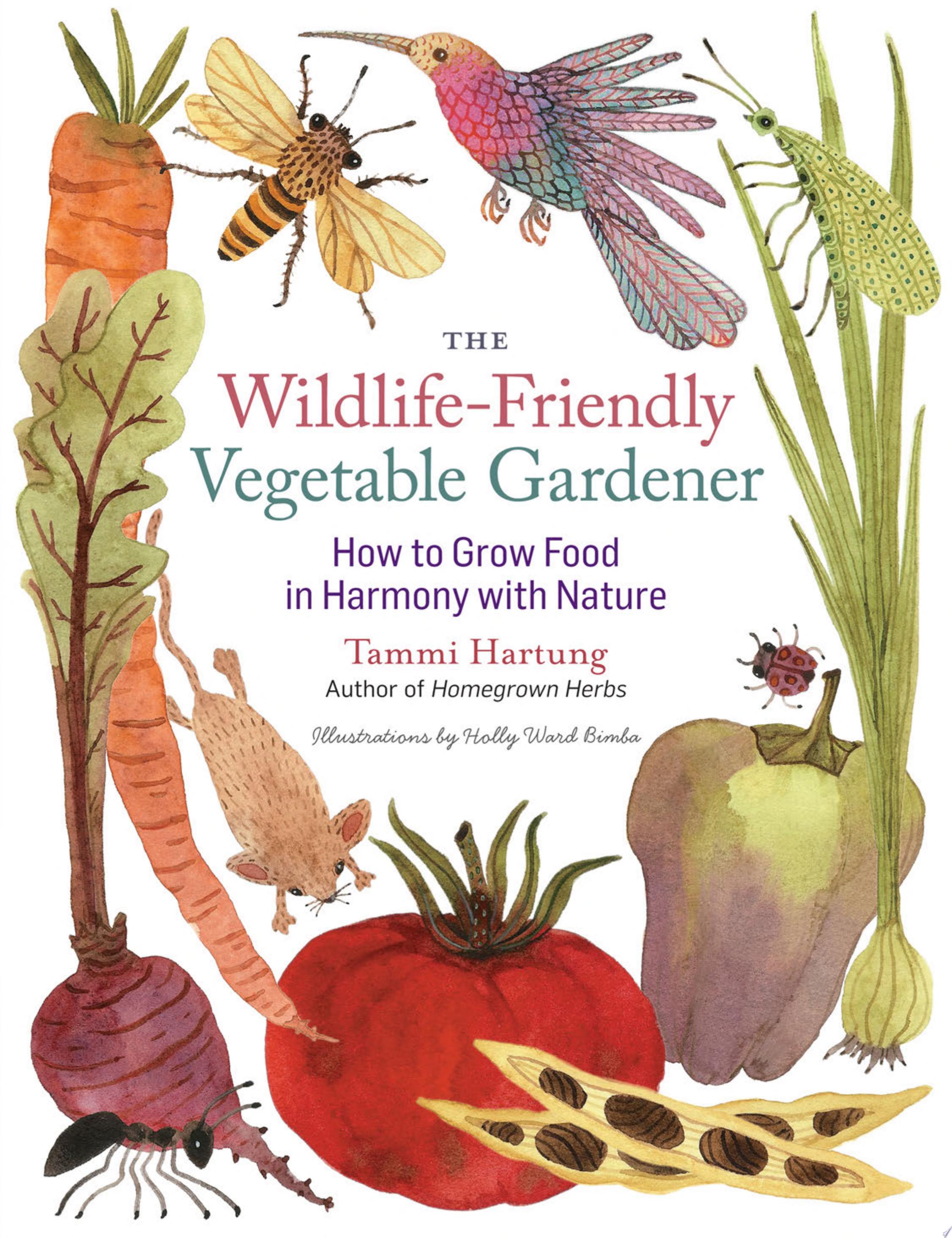
The Wildlife-Friendly Vegetable Gardener
This one-of-a-kind book shows you how to create a peaceful co-existence between your vegetable garden and the wildlife who consider it part of their habitat. By understanding and working with the surrounding environment Ð instead of continually fighting it Ð you'll reap a larger harvest with much less stress and effort. Tammi Hartung explains how to start with a hardy and healthy garden, create beneficial relationships through smart planting, attract helpful insects and pollinators, intentionally create habitats for wildlife, and much more.
-
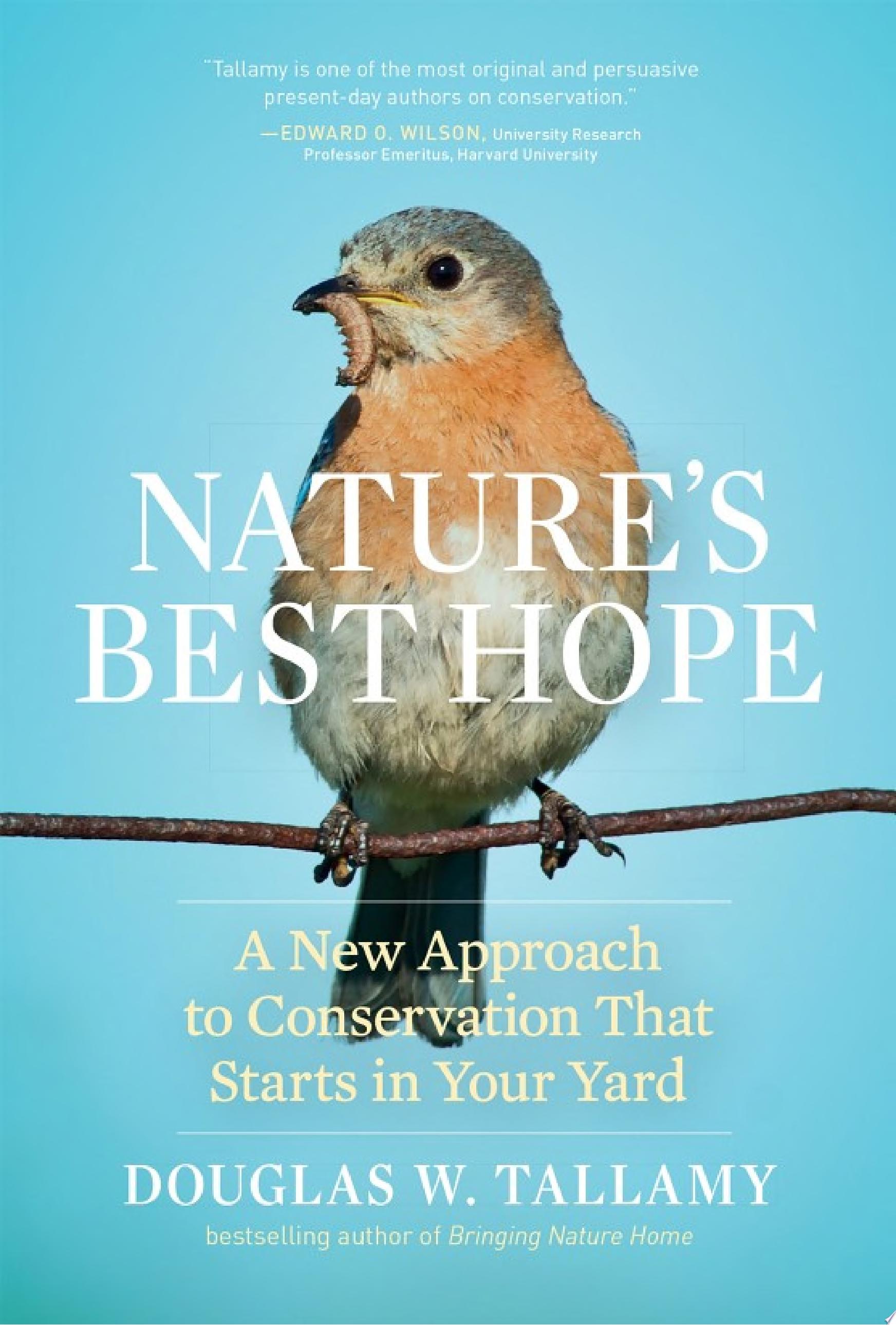
Nature's Best Hope
“Tallamy lays out all you need to know to participate in one of the great conservation projects of our time. Read it and get started!” —Elizabeth Kolbert, Pulitzer Prize-winning author of The Sixth Extinction
Douglas W. Tallamy’s first book, Bringing Nature Home, awakened thousands of readers to an urgent situation: wildlife populations are in decline because the native plants they depend on are fast disappearing. His solution? Plant more natives. In this new book, Tallamy takes the next step and outlines his vision for a grassroots approach to conservation. Nature’s Best Hope shows how homeowners everywhere can turn their yards into conservation corridors that provide wildlife habitats. Because this approach relies on the initiatives of private individuals, it is immune from the whims of government policy. Even more important, it’s practical, effective, and easy—you will walk away with specific suggestions you can incorporate into your own yard.
If you’re concerned about doing something good for the environment, Nature’s Best Hope is the blueprint you need. By acting now, you can help preserve our precious wildlife—and the planet—for future generations. -
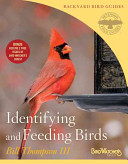
Identifying and Feeding Birds
This readable, friendly guide is intended for bird watchers and non–bird watchers alike—for anyone who wants to enjoy nature right in his or her own backyard. The longtime editor of Bird Watcher's Digest and author of numerous books on birds, Bill Thompson III has been feeding and watching birds for forty years. He has tried everything, and here he shares what he's learned so that readers can avoid mistakes and skip right to successful bird feeding. He also debunks common myths about bird feeding: Does feeding birds stop them from migrating? Will birds starve if you leave your feeders empty after the birds have come to rely on them? In an easygoing and lighthearted style, seven chapters cover all the elements needed to attract birds to a backyard (food, water, shelter) and address special cases and problems (keeping bees out of the hummingbird feeder, preventing birds from flying into windows, and much more). The final chapter profiles the 130 species that are most common at backyard feeders. No separate field guide is needed; it's all right here—everything a beginner needs to know to attract birds and then figure out what kind they are.
-
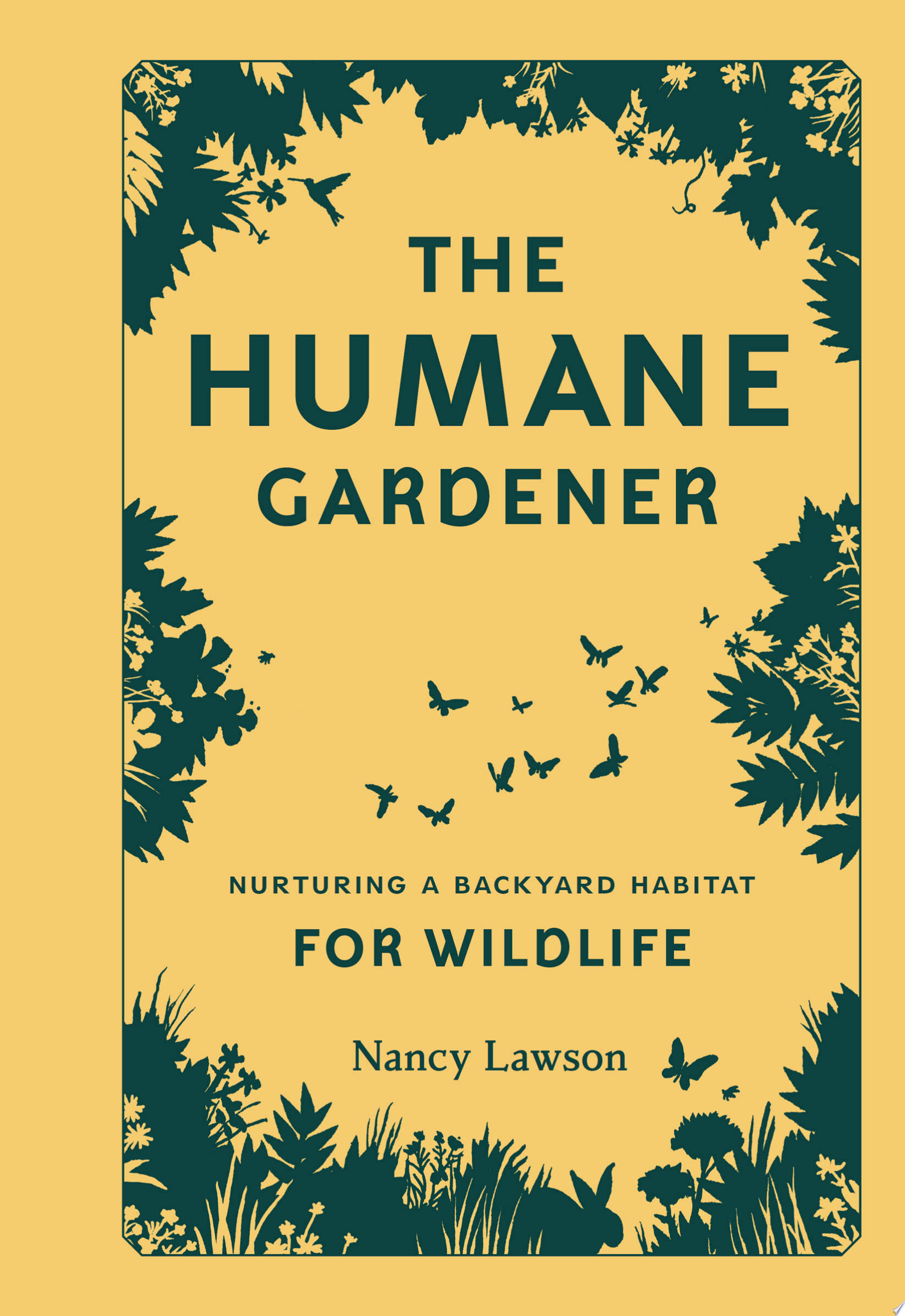
The Humane Gardener
In this eloquent plea for compassion and respect for all species, journalist and gardener Nancy Lawson describes why and how to welcome wildlife to our backyards. Through engaging anecdotes and inspired advice, profiles of home gardeners throughout the country, and interviews with scientists and horticulturalists, Lawson applies the broader lessons of ecology to our own outdoor spaces.
Detailed chapters address planting for wildlife by choosing native species; providing habitats that shelter baby animals, as well as birds, bees, and butterflies; creating safe zones in the garden; cohabiting with creatures often regarded as pests; letting nature be your garden designer; and encouraging natural processes and evolution in the garden. The Humane Gardener fills a unique niche in describing simple principles for both attracting wildlife and peacefully resolving conflicts with all the creatures that share our world. -
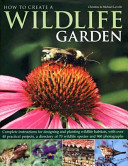
How to Create a Wildlife Garden
Most gardeners view themselves as nature lovers, with one of the most enjoyable aspects of creating and maintaining a garden lying in the feeling of closeness to nature. It often comes as a surprise to many, however, that their garden is an essential home.
-
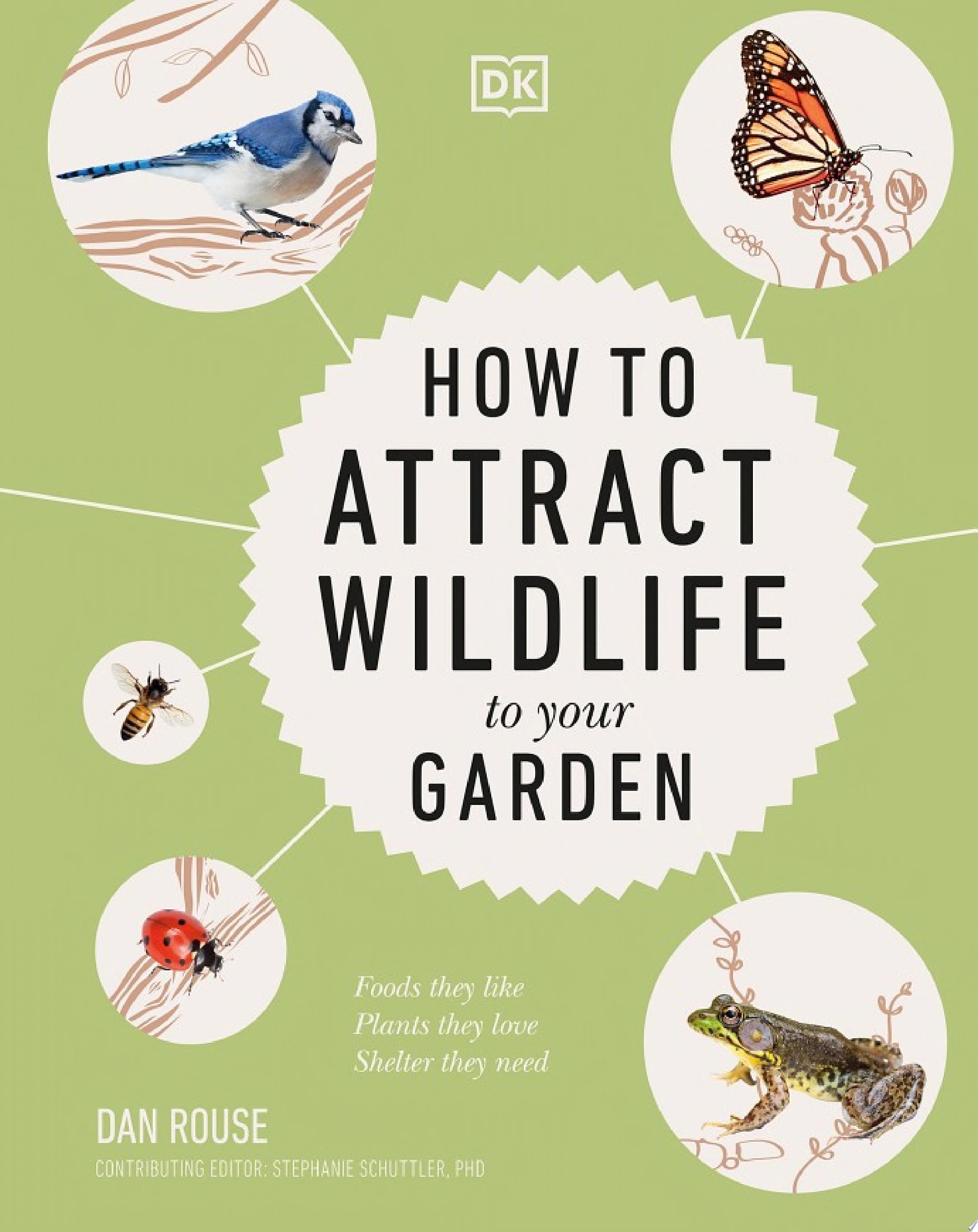
How to Attract Wildlife to Your Garden
Transform your garden into a haven for all kinds of wildlife.
In a world with too much concrete and not enough greenery, every wildlife-friendly garden can make a huge difference. But what if we told you that you can make a difference to your local wildlife from the comfort of your own home? You can help to reverse the decline in bird numbers and much more by creating a haven in which they will thrive!
Let author, presenter, and wildlife conservationist Dan Rouse show you how you can make your outdoor space more welcoming for a wide variety of visitors, from planting pollinator-friendly perennials to digging a pond. Learn the best ways to provide shelter, food, and water, discover the best planting choices and how they can help, then sit back and watch as your garden becomes a much-needed refuge for a huge range of species.
Dive straight in to discover:
- A beautiful mixture of full-color illustrations and photos of different species.
- Practical advice on supporting local wildlife, with ideas suitable for all budgets and abilities.
- Suggestions for beneficial plant choices for a range of climate and soil types.
- Step-by-step projects tailored to both attracting wildlife and to observe the wildlife that visits the garden.
- Ideas for small gardens and outdoor spaces, as well as practical considerations such as pets and children sharing a garden with wildlife.
- Final chapter on ‘Observing garden wildlife’ that showcases low- and high-tech methods of watching for wildlife, and how to connect with the wider wildlife community.
The book features plenty of projects to help you attract and observe your new garden visitors, as well as galleries of common species you can expect to see. Following in the footsteps of its sister title How to Attract Birds to Your Garden, everything in the book is clear, accessible, and engaging, with plenty of budget-friendly tips and ideas suitable for gardeners and non-gardeners alike.
Packed with equal parts expertise and passion, How to Attract Wildlife to Your Garden proves that, by giving nature opportunities to thrive, we all benefit: ourselves, our planet, and the wildlife that may call our garden home. -
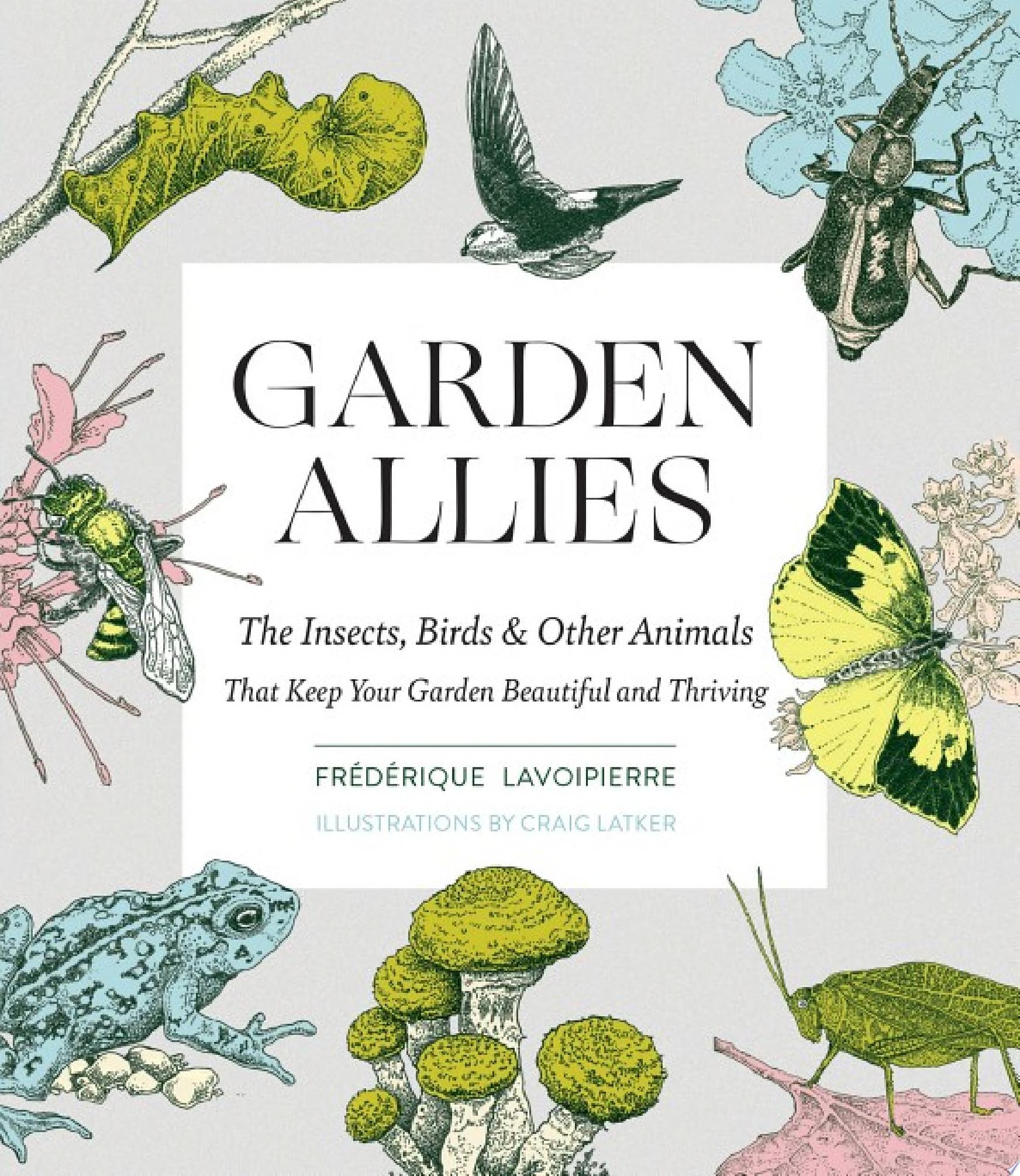
Garden Allies
"Explains how your garden can be a thriving, balanced community that gives more to your landscape than it takes." —Douglas W. Tallamy, author of The Nature of Oaks and Nature’s Best Hope
The birds, mammals, reptiles, and insects that inhabit our yards and gardens are overwhelmingly on our side—they are not our enemies, but instead our allies. They pollinate our flowers and vegetable crops, and they keep pests in check. In Garden Allies, Frédérique Lavoipierre shares fascinating portraits of these creatures, describing their life cycles and showing how they keep the garden’s ecology in balance. Also included is helpful information on how to nurture and welcome these valuable creatures into your garden. With beautiful pen-and-ink drawings by Craig Latker, Garden Allies invites you to make friends with the creatures that fill your garden—the reward is a renewed sense of nature’s beauty and a garden humming with life. -

Butterfly Gardening
An indispensable and lavishly illustrated guide to creating a garden that attracts and sustains butterflies
Butterfly gardening creates habitats that support butterflies, connecting us with some of the most beautiful creatures in the natural world and bringing new levels of excitement and joy to gardening. In this engaging and accessible guide, lavishly illustrated with more than two hundred color photographs and maps, accomplished butterfly gardener Jane Hurwitz presents essential information on how to choose and cultivate plants that will attract a range of butterflies to your garden and help sustain all the stages of their life cycles.
An indispensable resource for aspiring and experienced butterfly gardeners alike, Butterfly Gardening is the most gardener-friendly source on the subject, covering all the practical details needed to create a vibrant garden habitat that fosters butterflies. It tells you which plants support which butterflies, depending on where you live; it describes what different butterflies require in the garden over the course of their lives; and it shows you how to become a butterfly watcher as well as a butterfly gardener.
While predominantly recommending regionally native plants, the book includes information on non-native plants. It also features informative interviews with experienced butterfly gardeners from across the United States. These gardeners share a wealth of information on plants and practices to draw butterflies to all kinds of gardens--from small suburban gardens to community plots and larger expanses.
Whether you are a gardener who wants to see more butterflies in your garden, a butterfly enthusiast who wants to bring that passion to the garden, or someone who simply wants to make their garden or yard friendlier to Monarchs or other butterflies, this is a must-have guide.- An essential guide for aspiring and experienced butterfly gardeners
- Encourages readers to rethink gardening choices to support butterflies and other pollinators in their gardens and communities
- Introduces gardeners to butterfly watching
- Includes regional lists of plant species that are time-proven to help sustain butterflies and their caterpillars
- Features informative interviews with expert butterfly gardeners from across the United States
-
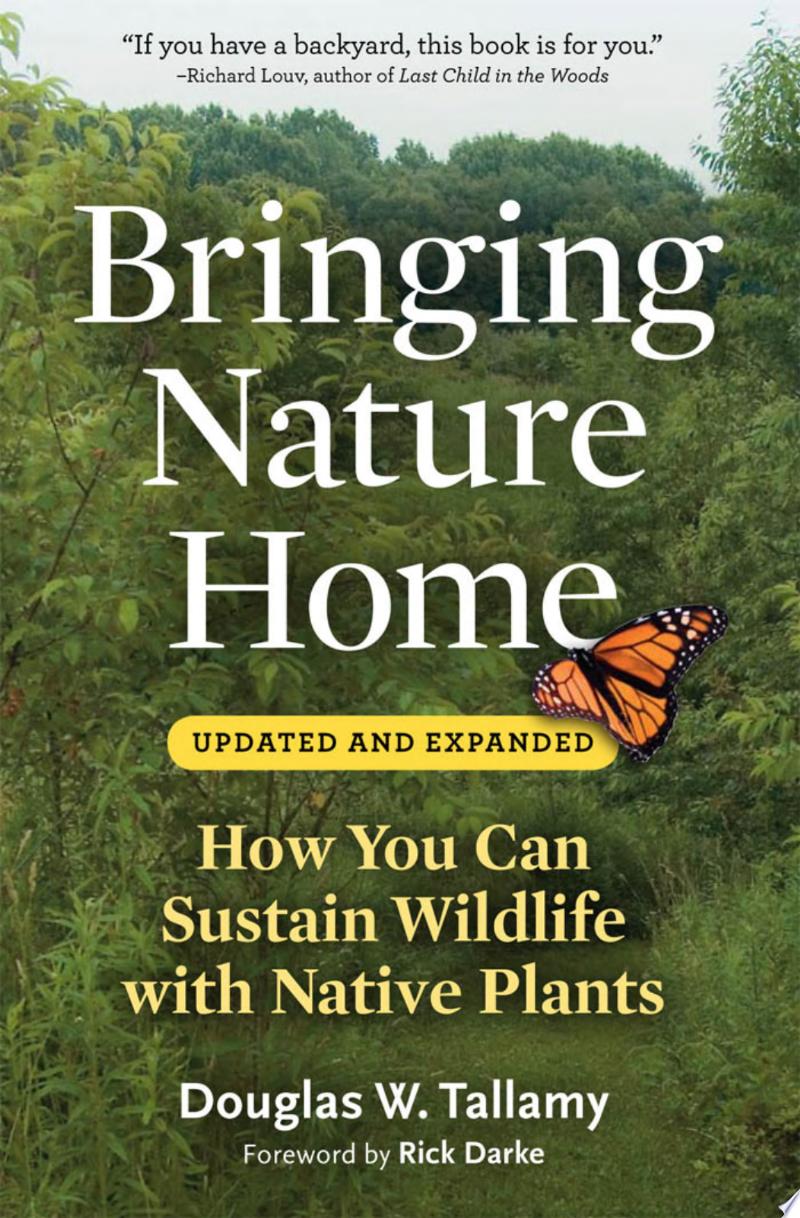
Bringing Nature Home
“A fascinating study of the trees, shrubs, and vines that feed the insects, birds, and other animals in the suburban garden.” —The New York Times
As development and habitat destruction accelerate, there are increasing pressures on wildlife populations. In Bringing Nature Home, Douglas W. Tallamy reveals the unbreakable link between native plant species and native wildlife—native insects cannot, or will not, eat alien plants. When native plants disappear, the insects disappear, impoverishing the food source for birds and other animals.
But there is an important and simple step we can all take to help reverse this alarming trend: everyone with access to a patch of earth can make a significant contribution toward sustaining biodiversity by simply choosing native plants. By acting on Douglas Tallamy's practical and achievable recommendations, we can all make a difference.
-
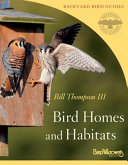
Bird Homes and Habitats
Two of the best-known names in birding--Peterson and Bird Watcher's Digest--team up to provide reliable, expert advice on how to attract the birds you want into your yard.
Which birds use nest boxes? What's required to maintain a birdhouse? What kind of habitat will attract which birds? What does it take to be a bluebird trail operator? What does it mean if baby birds or eggs disappear from their nest?
Bill Thompson III answers all of these questions and more, helping readers to create yards and gardens where birds will make their homes and raise their young.
It's easy enough to hang a birdfeeder. But there are plenty of other things that can attract birds to a landscape--and, in fact, birds need four essentials: food, water, shelter, and a place to nest. The more of these elements a yard has, the more attractive it is to birds.
A lavishly illustrated chapter provides ideas and inspiration for creating bird havens by profiling "Birdy Backyard All-Stars," fifteen homeowners from around the country who have actively worked to create bird-friendly habitats.
-
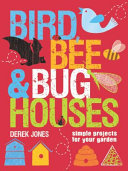
Bird, Bee & Bug Houses
Transform your garden into a wildlife haven bursting with life by learning how to provide supplementary nesting sites to a host of creatures. Bird, Bee & Bug Houses explains all you need to know about how to create the perfect nesting place for a wide variety of species including birds, bats, butterflies, lacewings, ladybugs, and rare solitary bees. Essential pollinators, predators and seed-spreaders, many of these species are threatened from intensive farming and the spraying of harmful chemicals. But, we can help them by building these safe havens in our gardens.
These unique and quirky houses can be created with only a few basic woodworking skills. A range of materials (some recycled or scavenged) and finishes are used in order to make sure they are as attractive as they are practical. All the basic techniques, tools, and materials needed to create your bird, bee, or bug house are explained and each project has a detailed exploded diagram with cutlist. Each section of the book has detailed information on choosing locations, maintenance, species' habits, and nesting requirements.
-
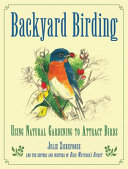
Backyard Birding
A Practical Illustrated Bird-Oriented Gardening Book with Great Reference Charts
Bird-watchers everywhere dream of a landscape dotted with fruiting shrubs, nests tucked into twining vines, and birds flocking to feeding stations. Let Natural Gardening for Birds show you how to lay out the welcome mat for birds by considering all of their needs, including year-round food, water, and shelter. Whether you're looking to create a hummingbird garden, install a water feature, create alluring perches, or simply designate a corner of your property as a natural area, you'll find all the inspiration and information you need in Natural Gardening for Birds, including:
The best plants for nectar, fruit, and seeds
The most attractive foods to offer birds
Housing for cavity-nesting birds
Simple habitat enhancements like snags and perches
Region-specific planting ideas and charts -
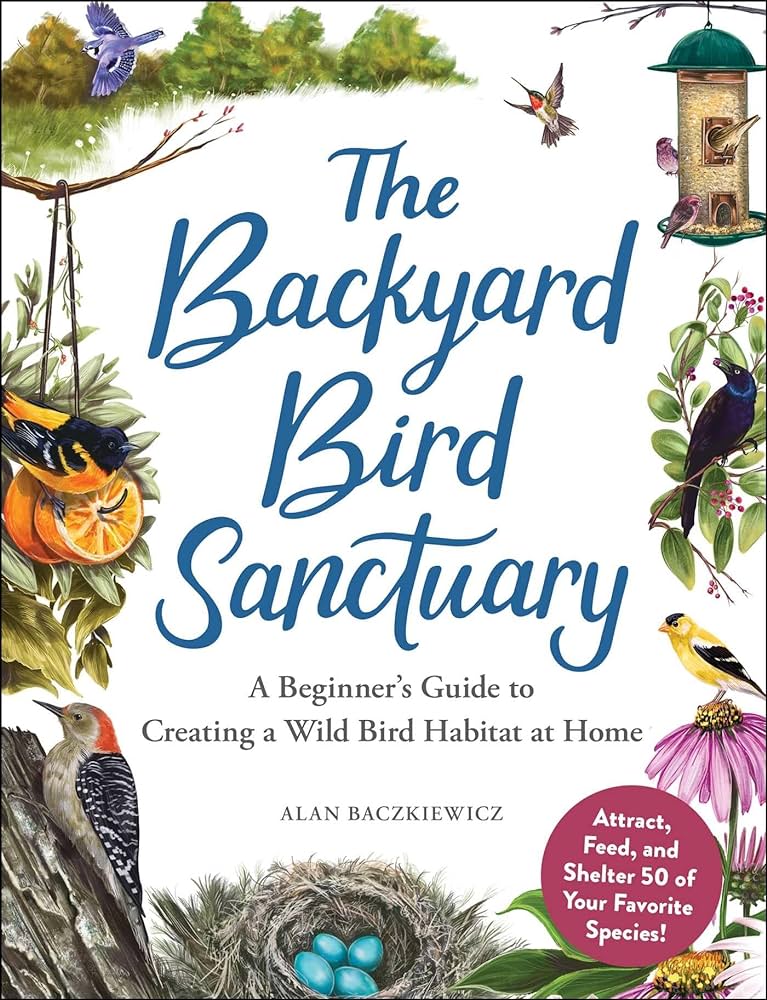
The Backyard Bird Sanctuary
Identify beautiful birds right in the comfort of your backyard with this illustrated, easy-to-use introductory guide to birding.
Ever wonder how to attract beautiful birds right to your backyard? Now you can create a bird-watching paradise with this accessible guidebook that teaches you everything you need to know about welcoming your new feathered friends and how to care for them while they’re visiting.
Backyard Bird Sanctuary helps you attract fifty of the most common and sought-after birds in the United States. With beautiful, full-color illustrations of both the male and female of each species, you’ll have no trouble identifying your new companions. Inside you’ll find everything you need to know about welcoming these birds into your yard including:
-Preferred types of food and feeder
-Nesting and brooding habits
-Range and migratory patterns
-Effective techniques for attracting birds
-Ways to provide shelter
-And so much more!
With tips and advice for any sized yard—even a small patio or balcony—you can enjoy the beauty of wild birds wherever you live. Now you can surround your home with cheerful bird songs and beautiful plumage all year long! -
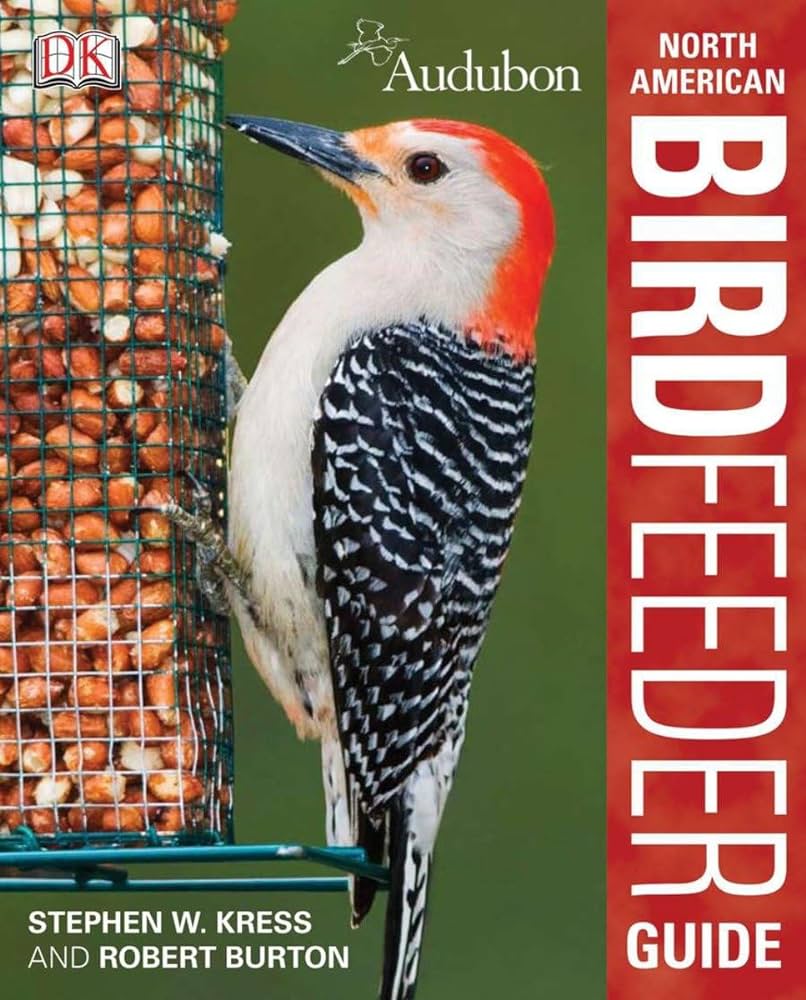
Audubon North American Birdfeeder Guide
Produced in association with the National Audubon Society, the North American Birdfeeder Guide covers the best ways to attract, observe and feed birds in your own backyard. From profiles of individual species to understanding bird behavior, this is the only book you'll need to master the art of bird watching.
-
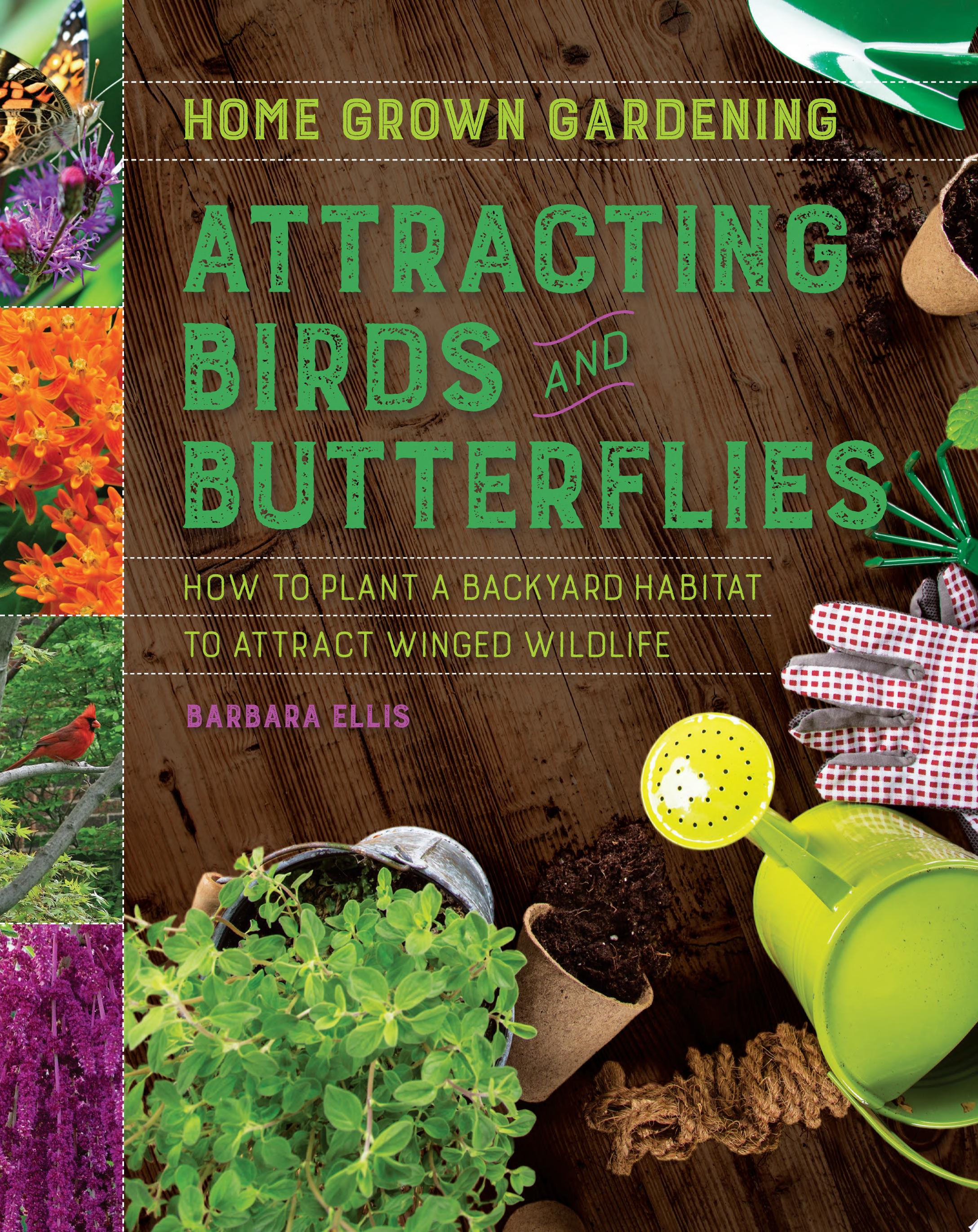
Attracting Birds and Butterflies
A quick-reference guide to attracting birds and butterflies for gardeners with little experience and time.
In the eye of a bird or butterfly, the typical suburban landscape resembles an unfriendly desert. Closely mowed lawns, tightly clipped shrubs, raked-up borders, and deadheaded flowers mean no place to nest, no food to eat, and nowhere to hide. To the humans who live there, this means no bird songs, no colorful butterflies, no dazzling hummingbirds, no night-sparkling fireflies.
Creating a garden that welcomes these creatures may seem like a confusing and complicated task, but the principles involved are relatively simple. Essentially, wildlife needs food, water, and shelter, just like we do, and this lavishly illustrated guide shows which plants attract which creatures, and how to plant and care for them.
